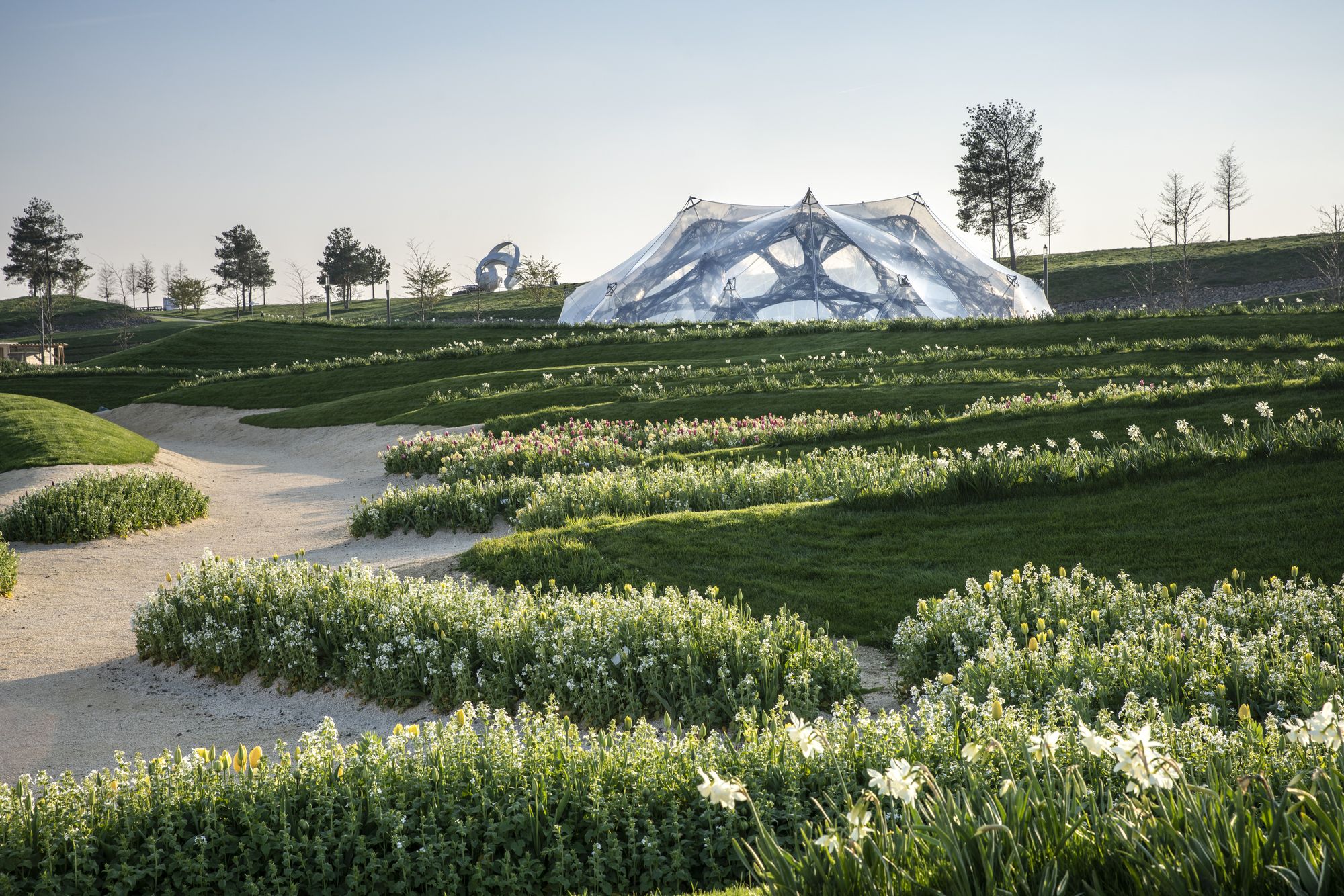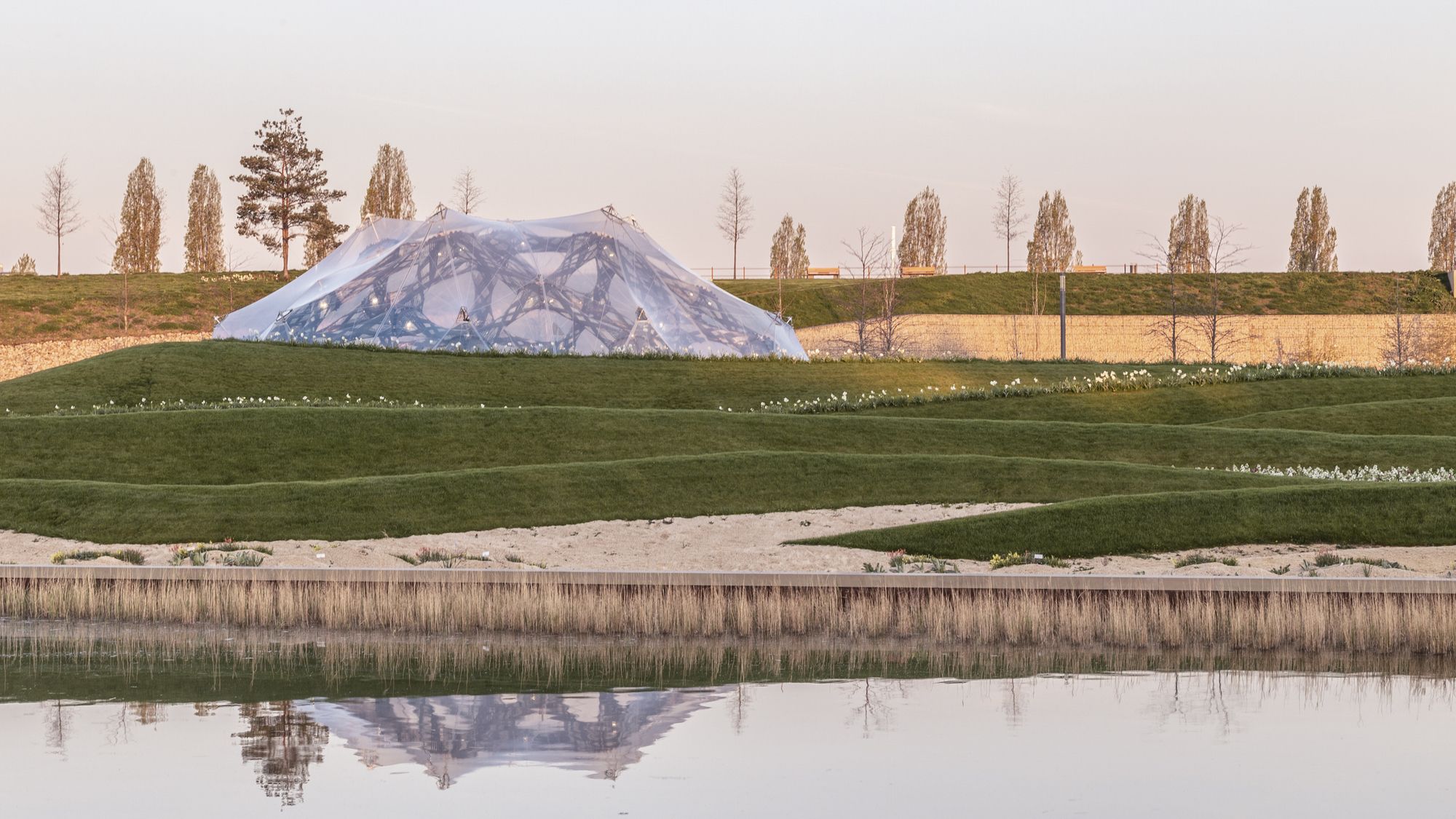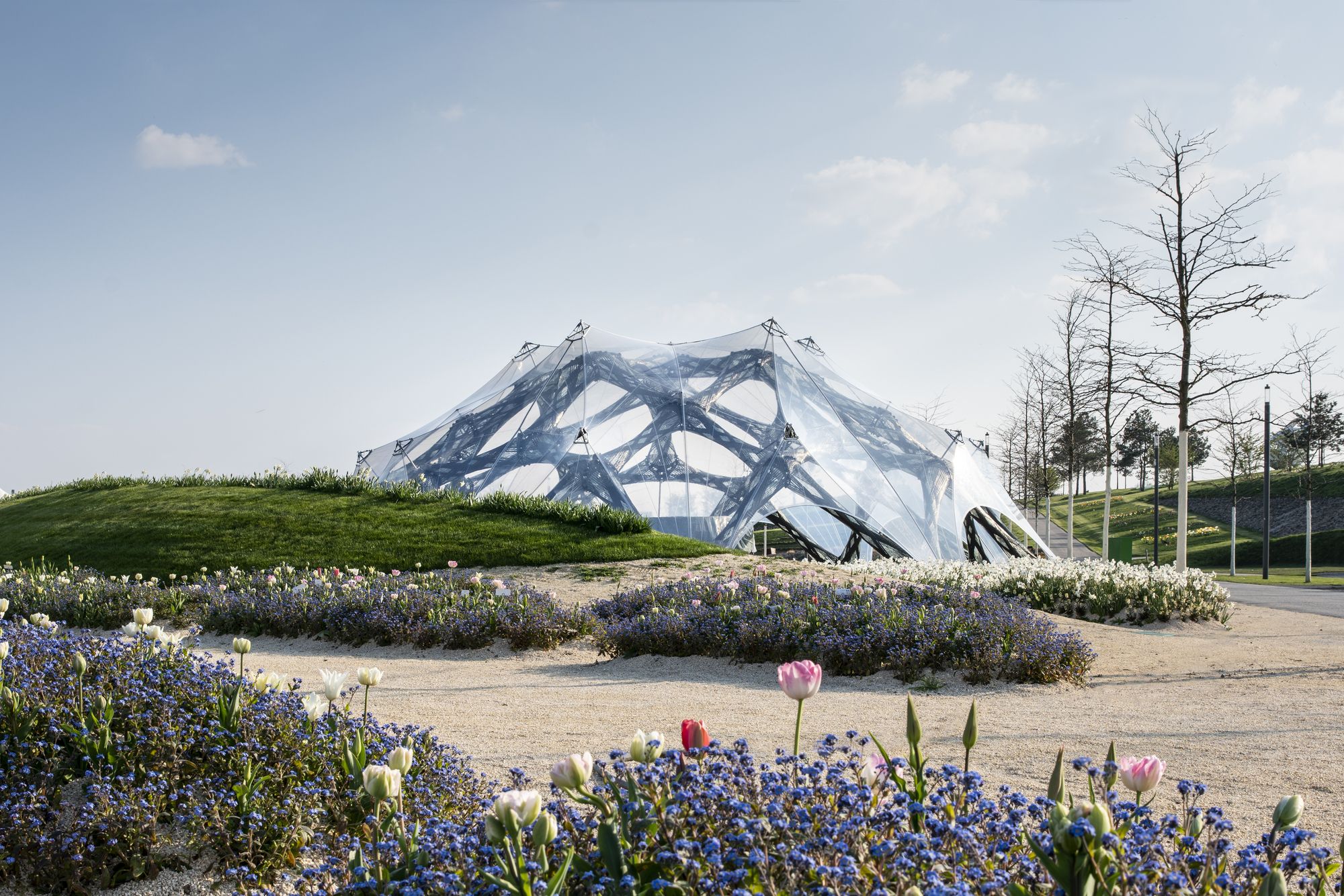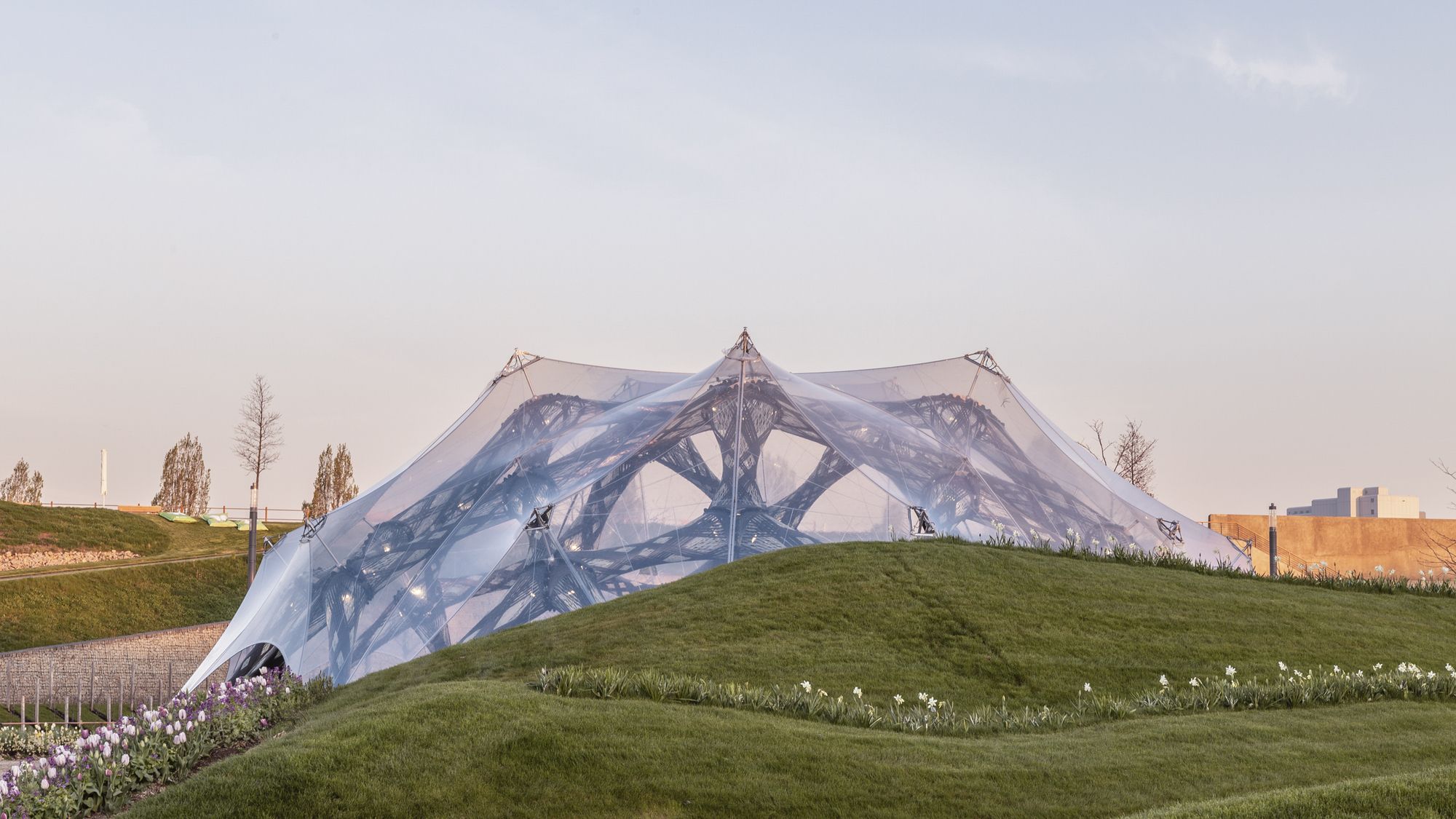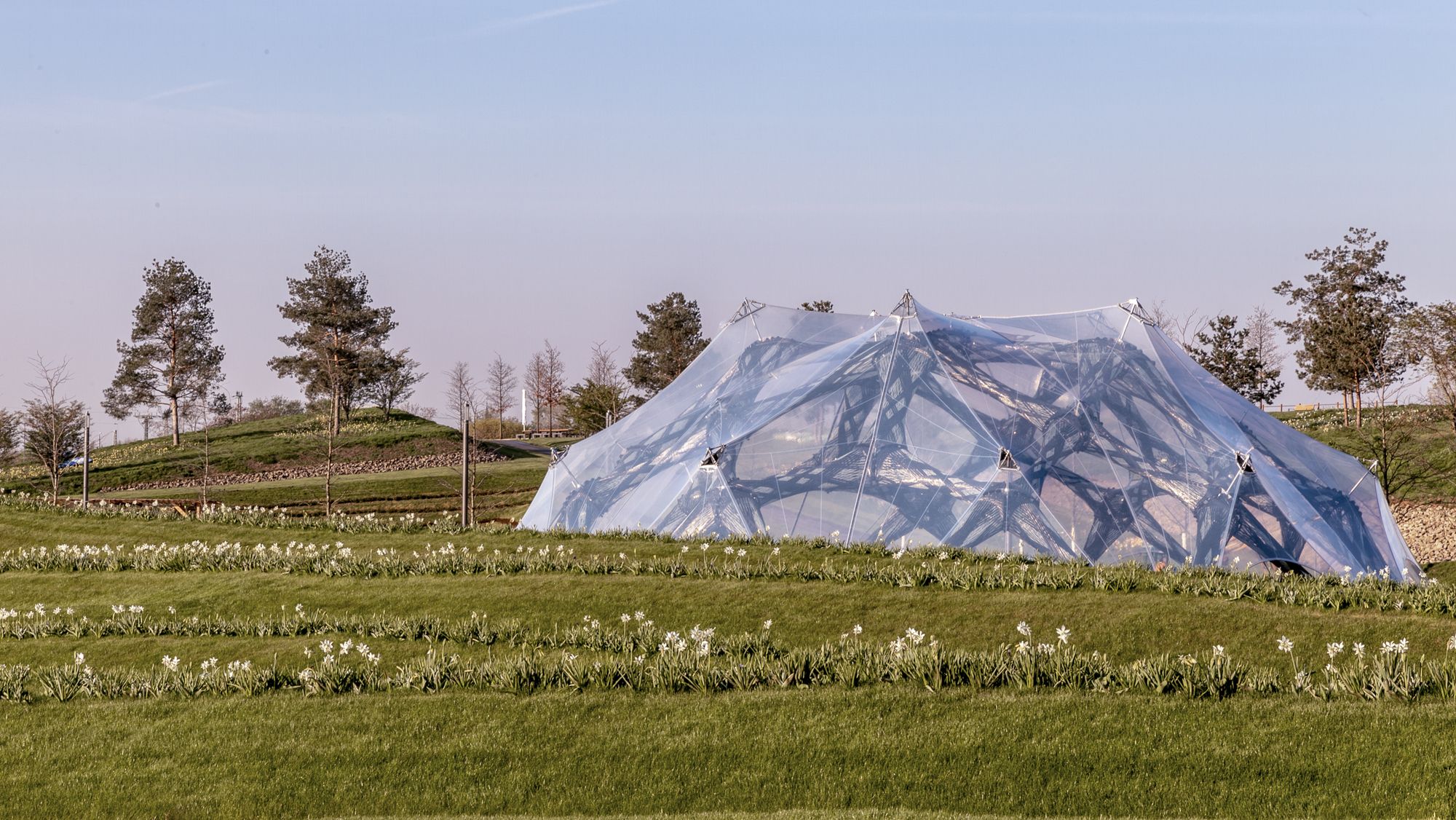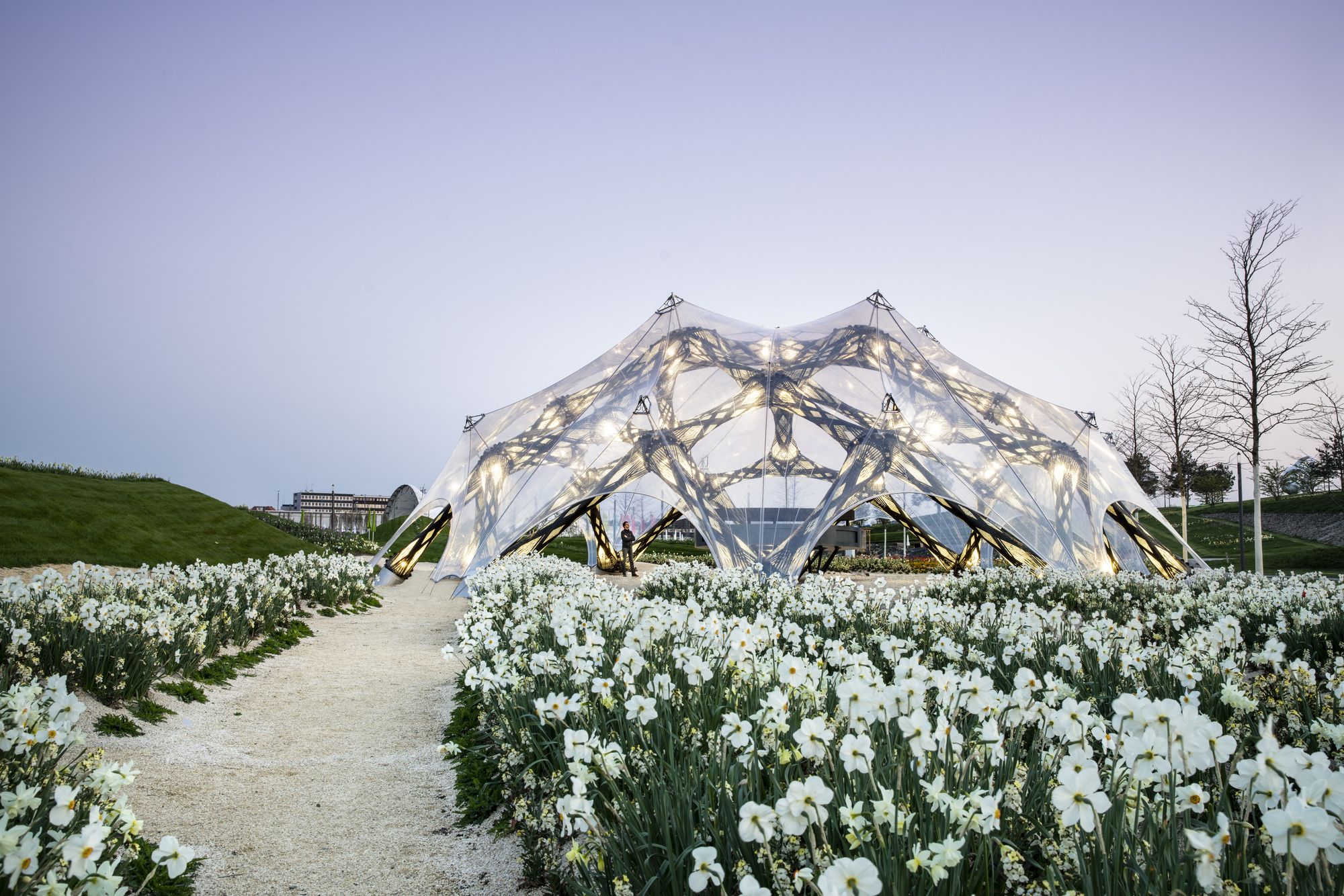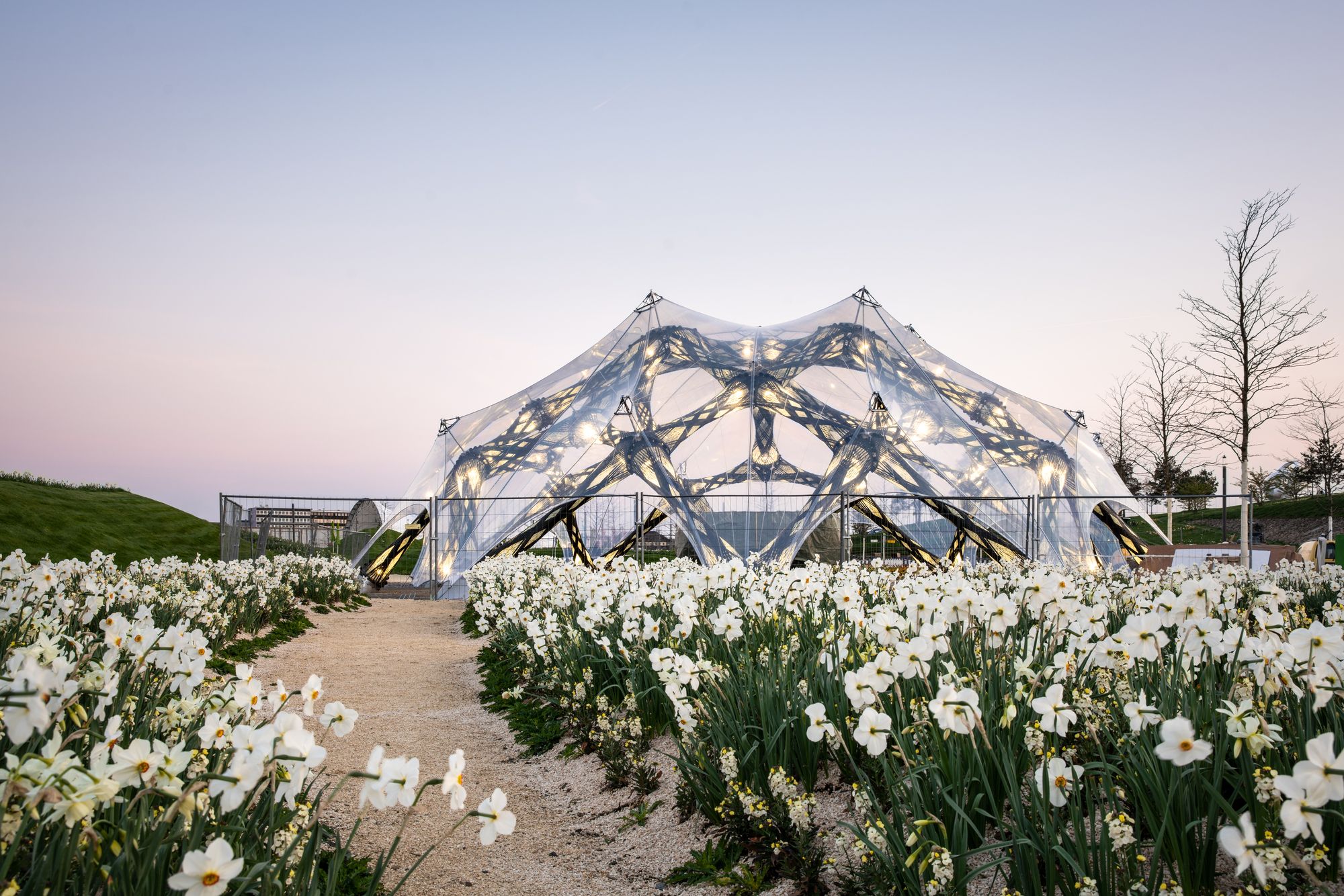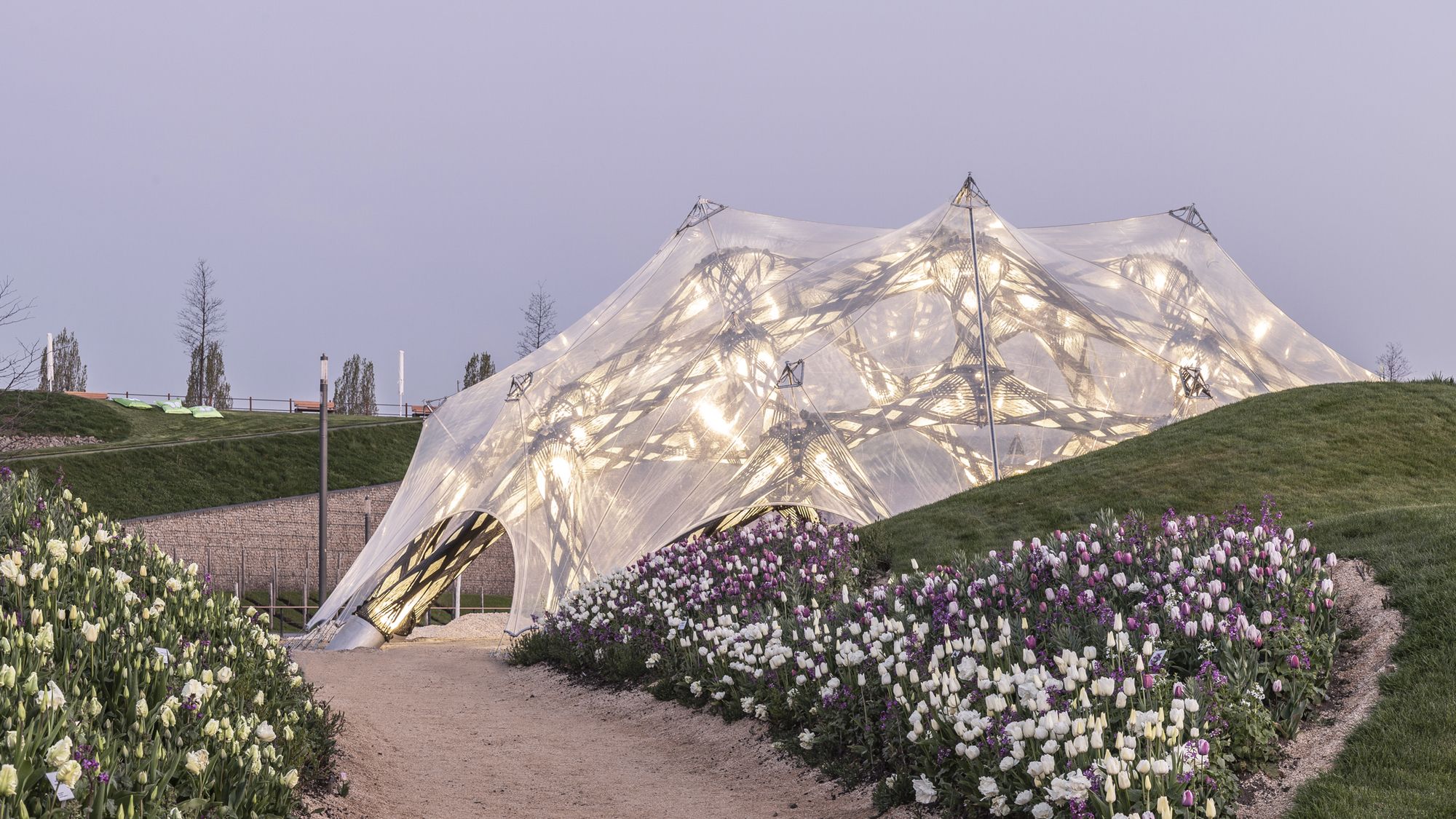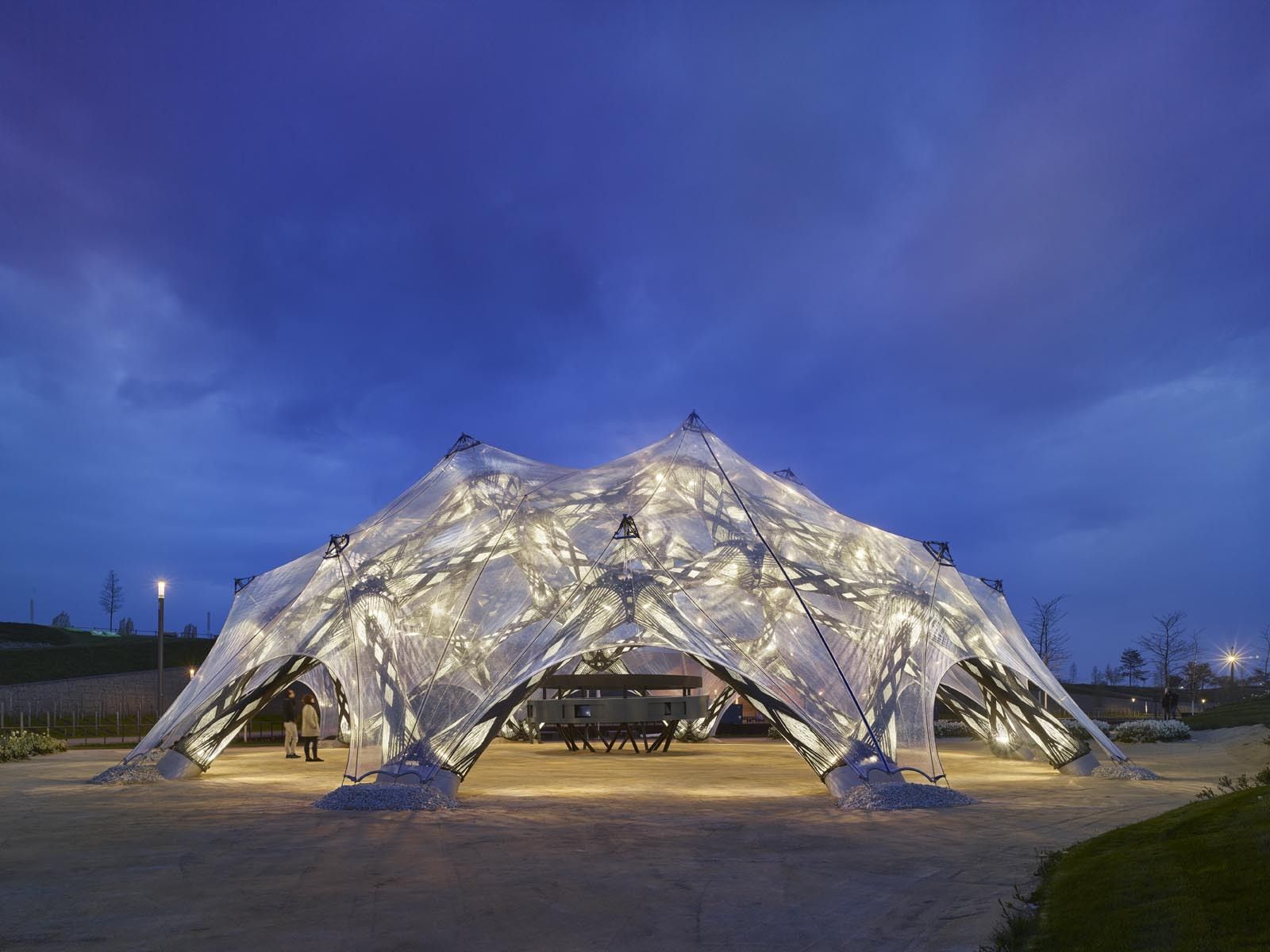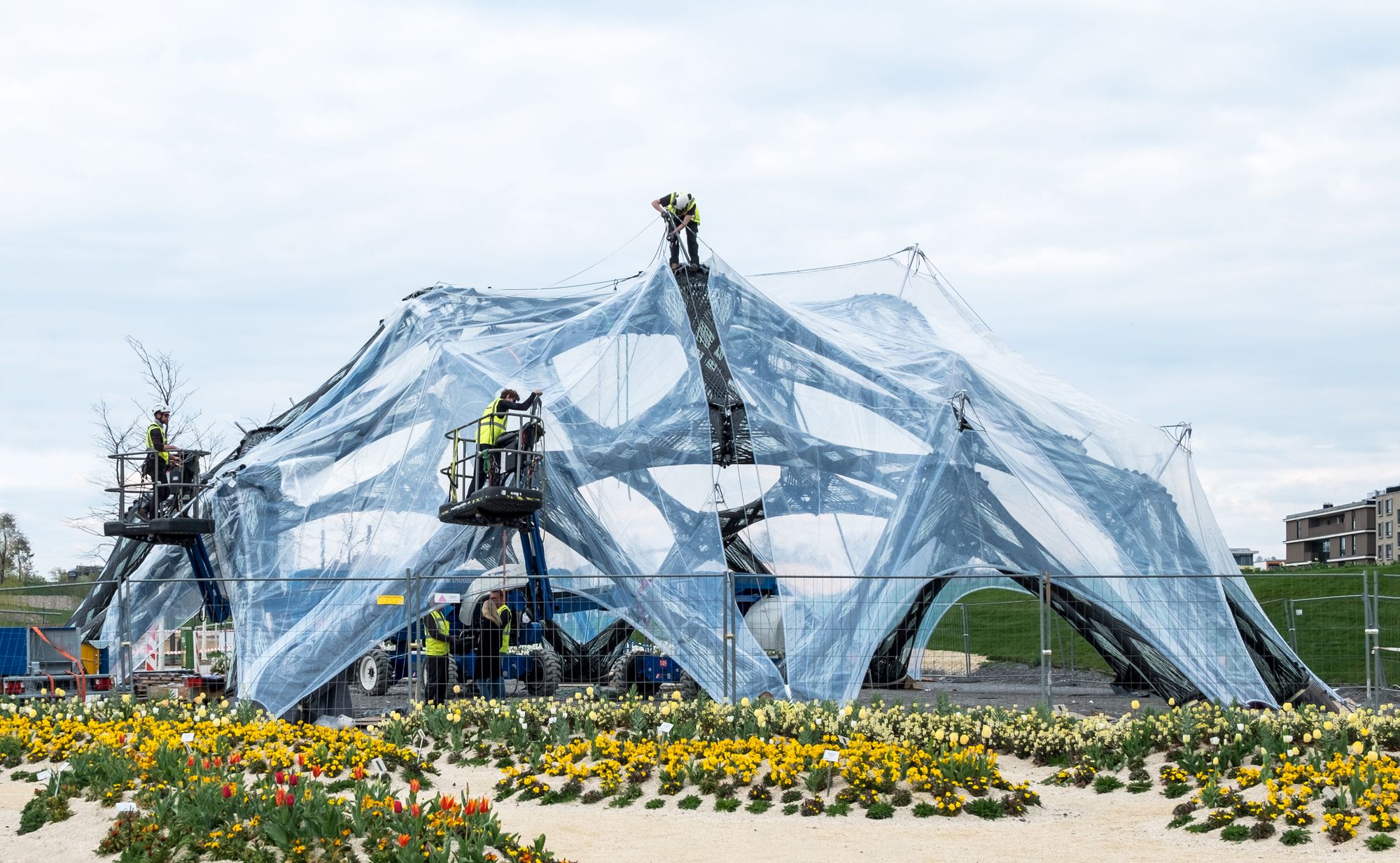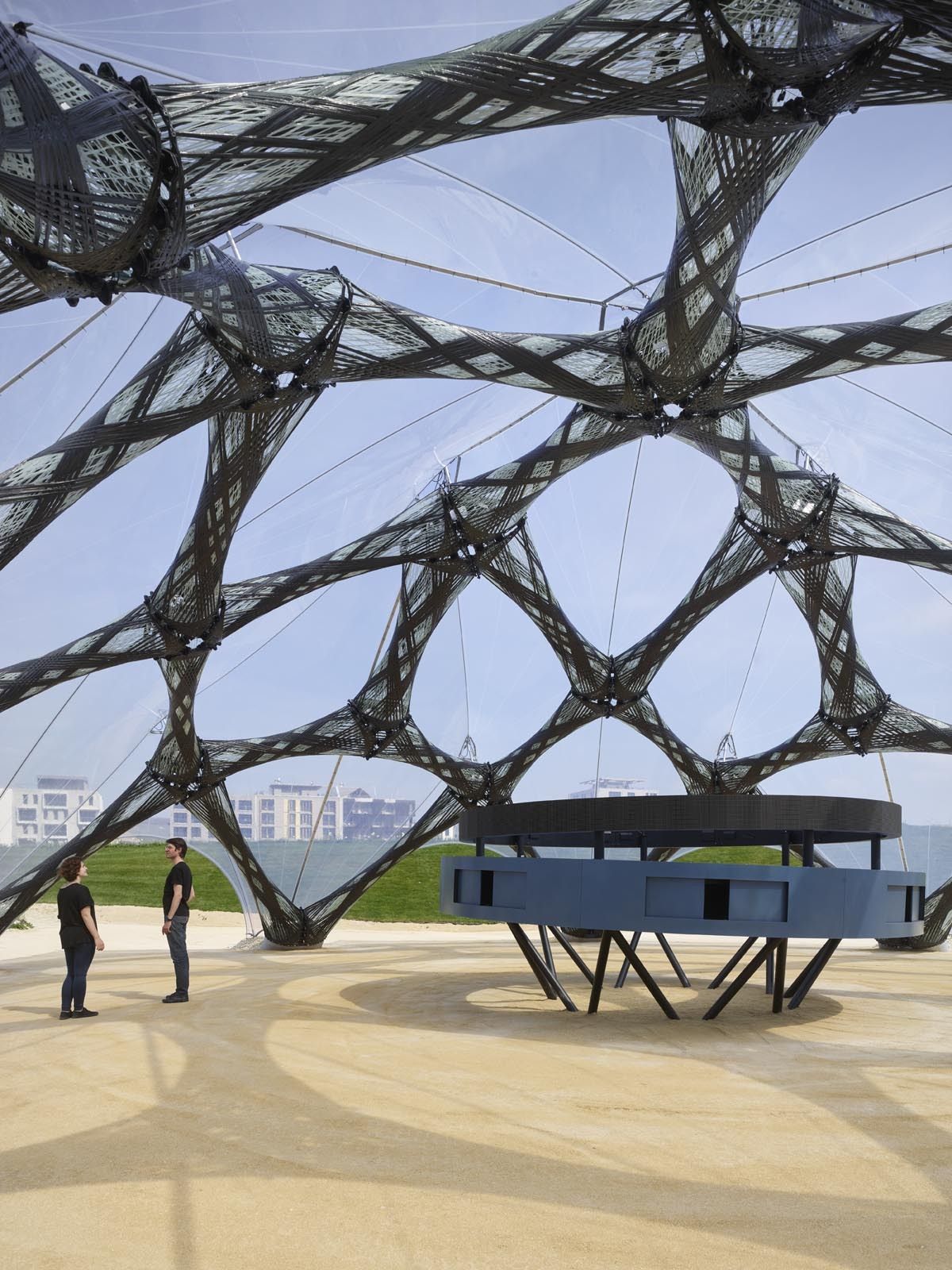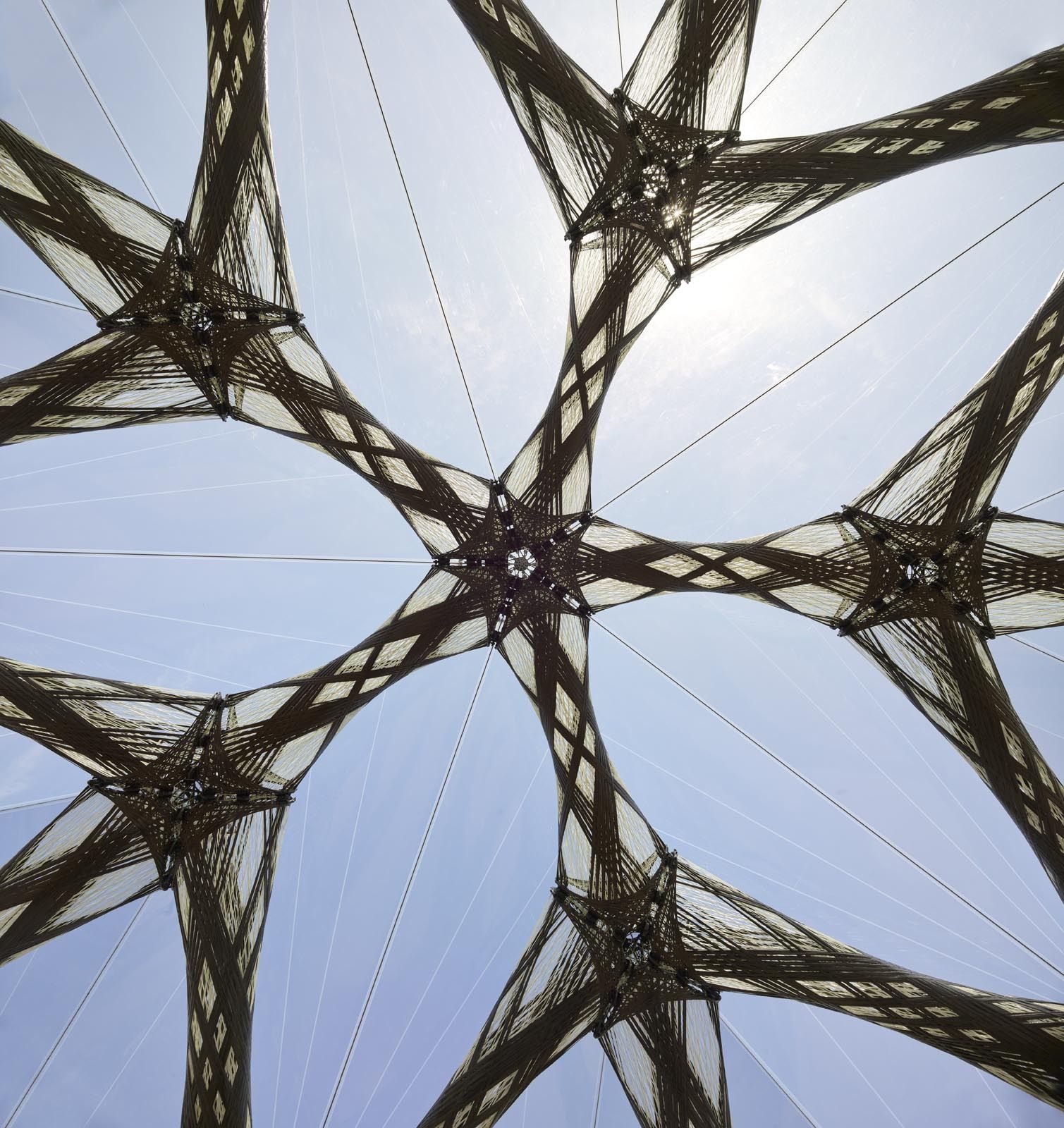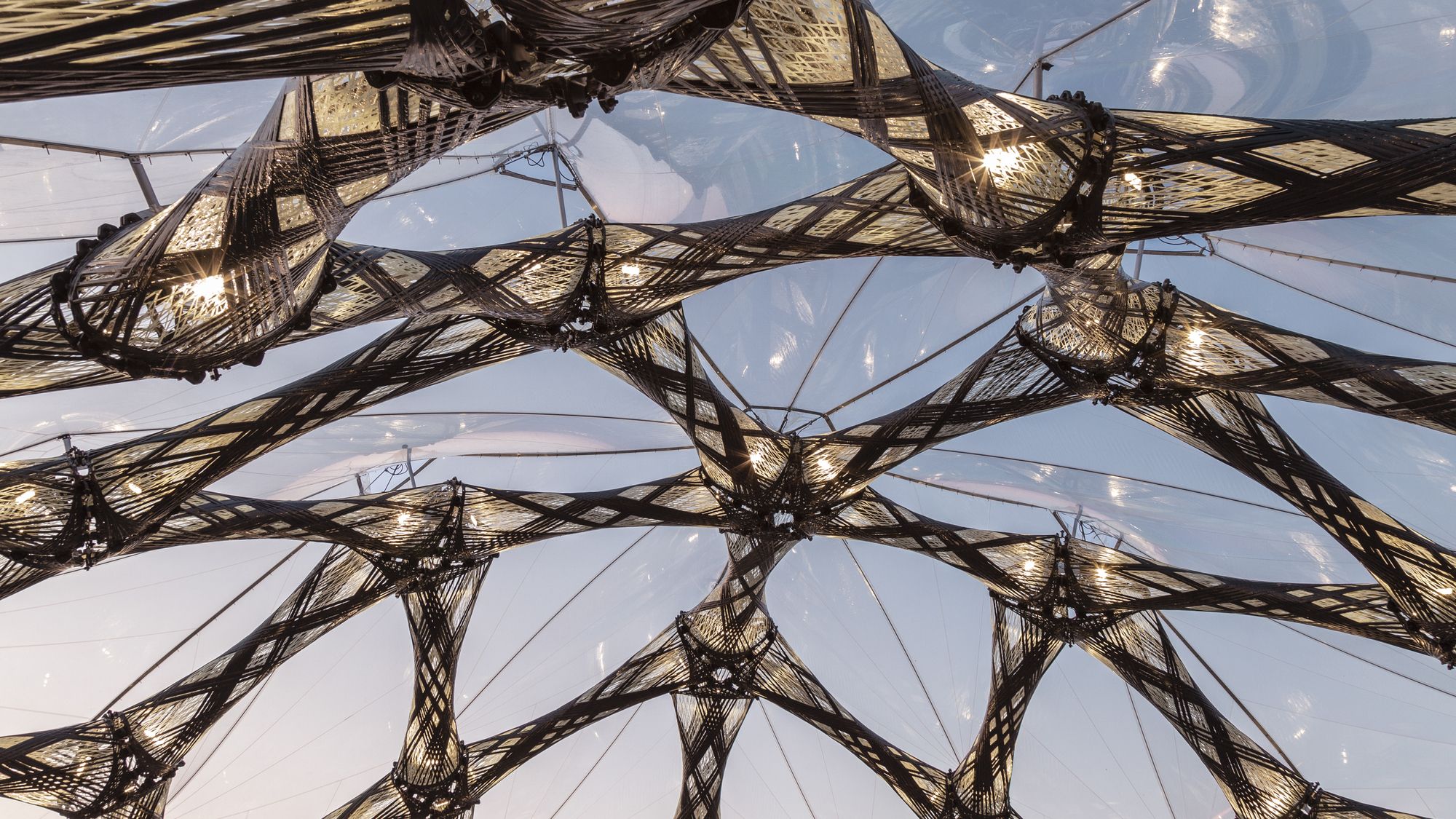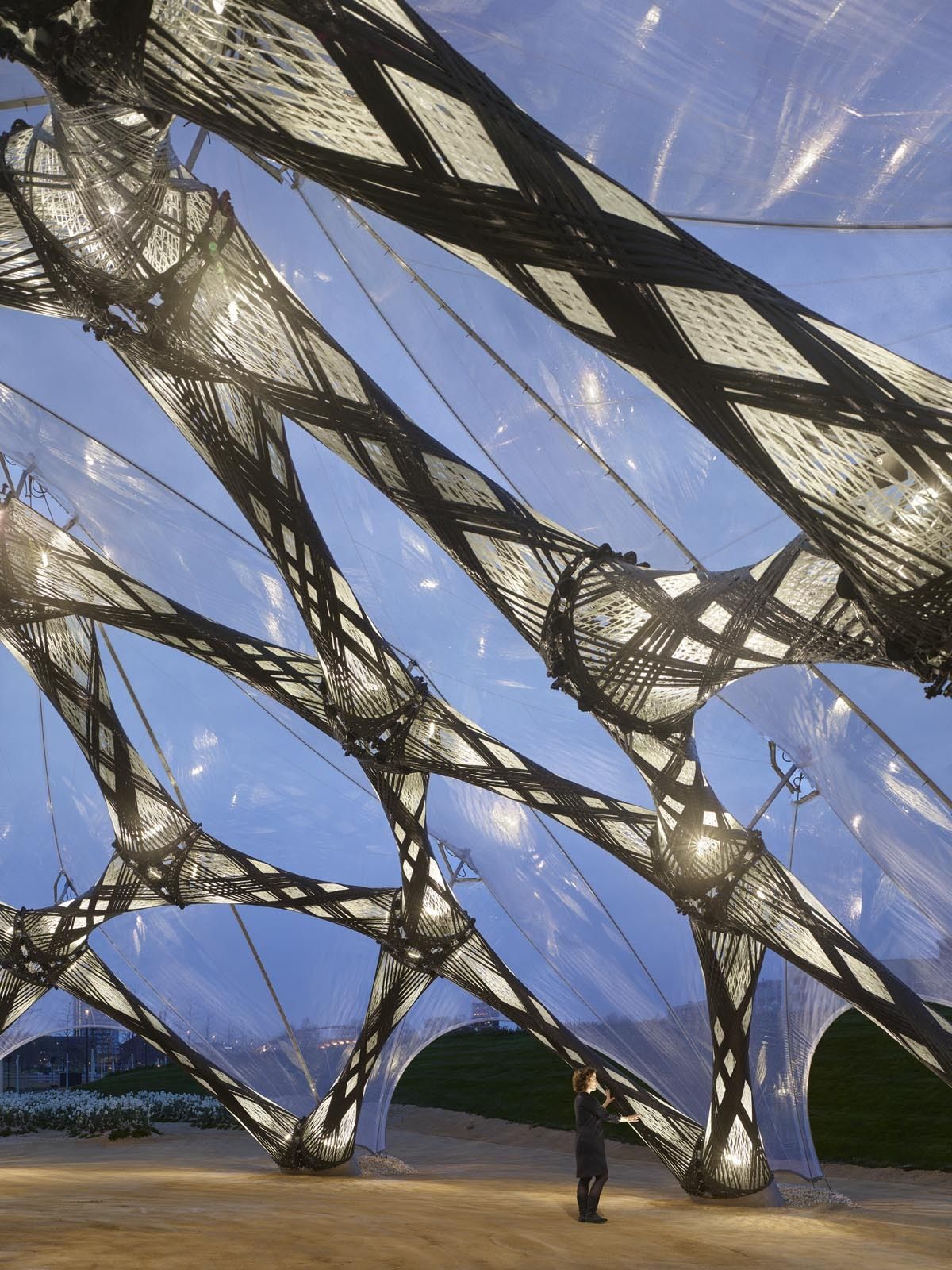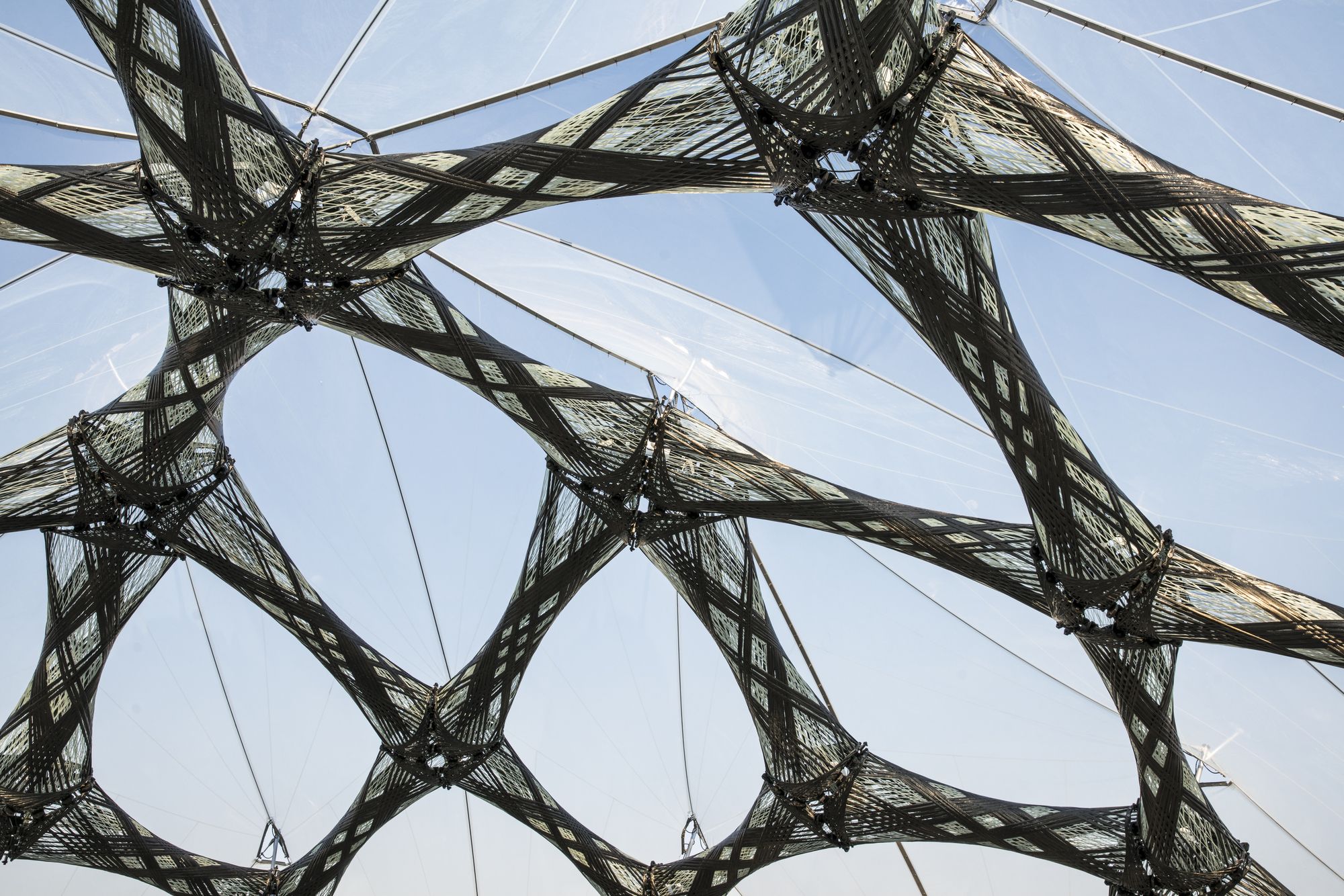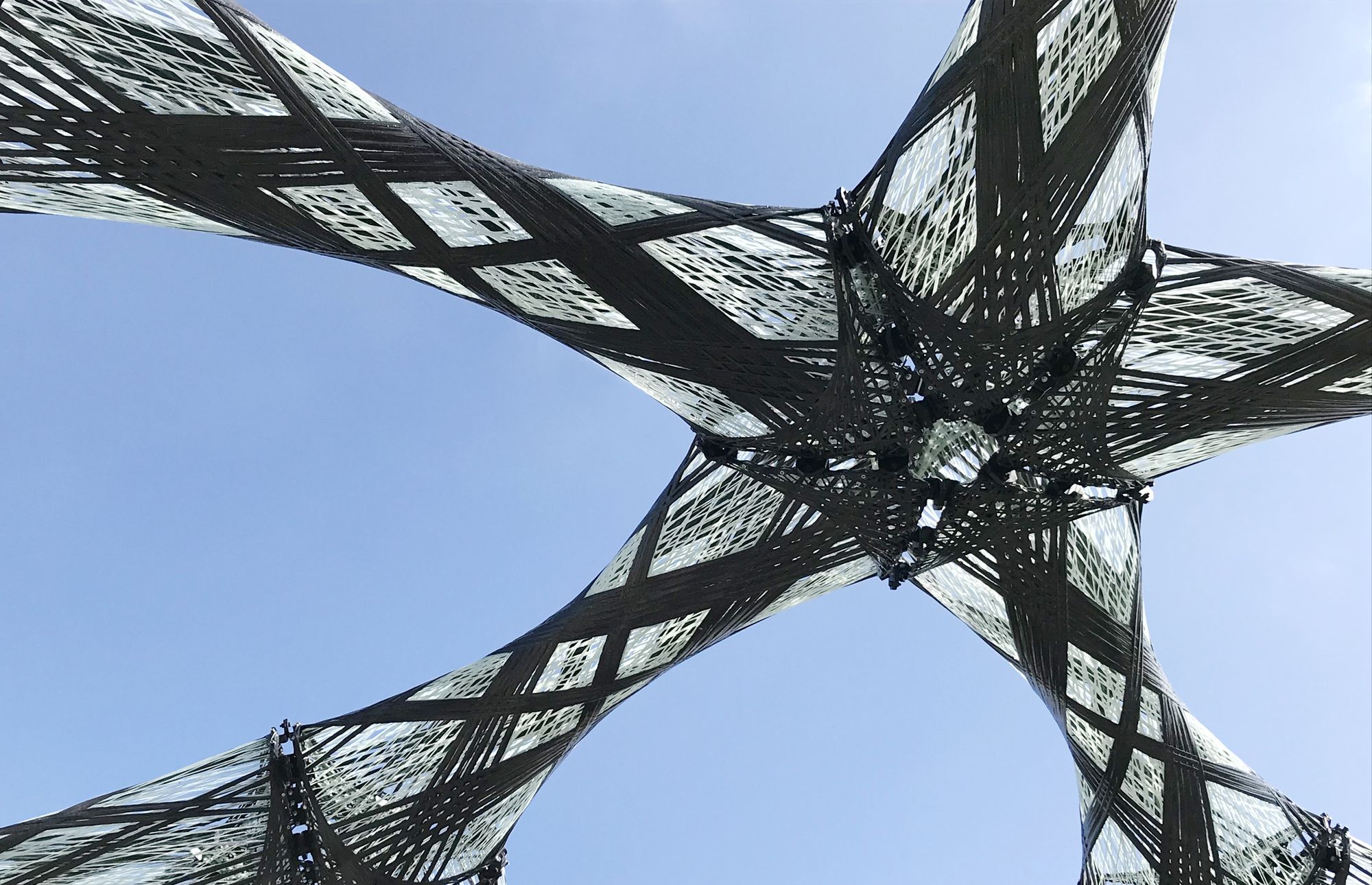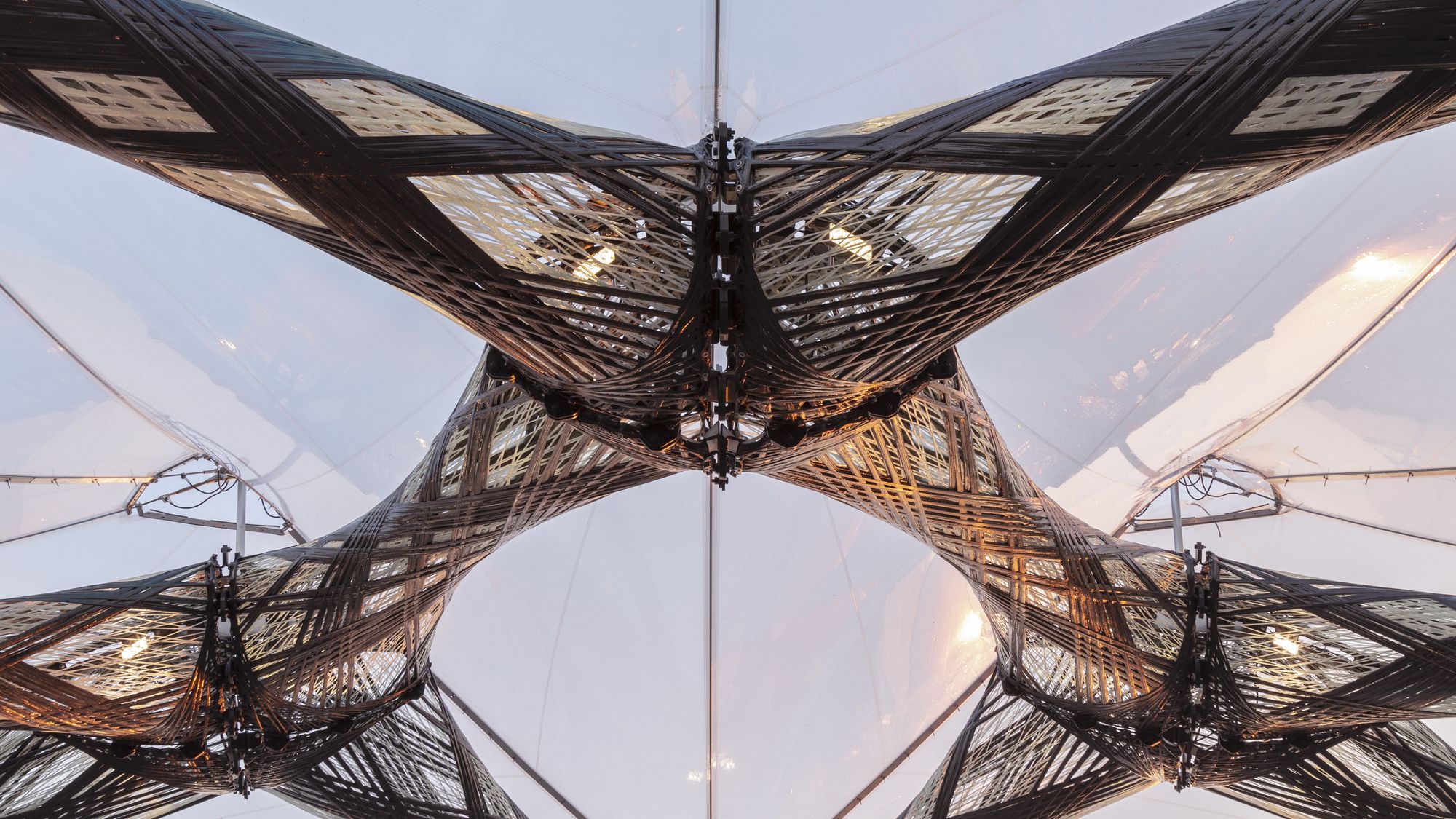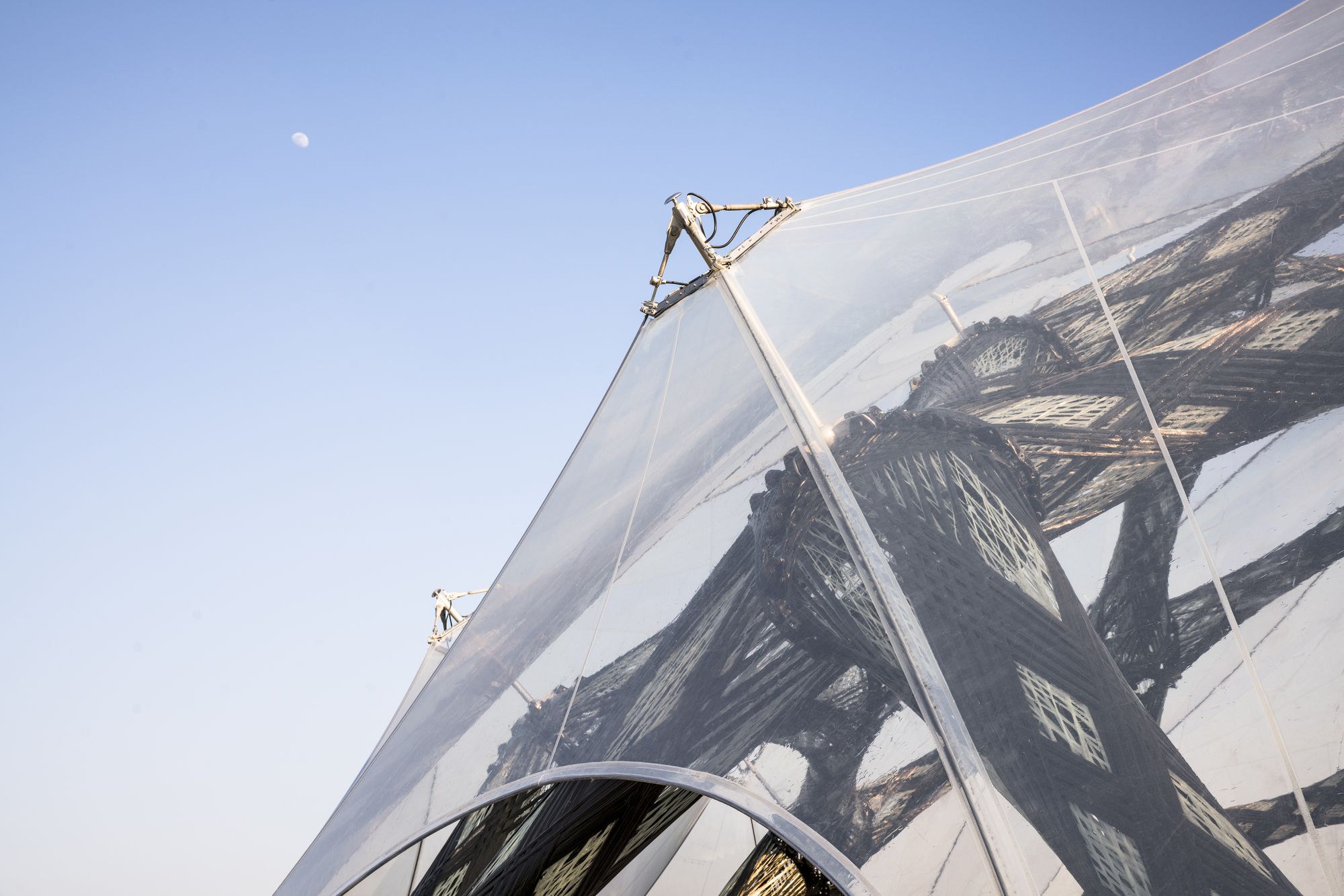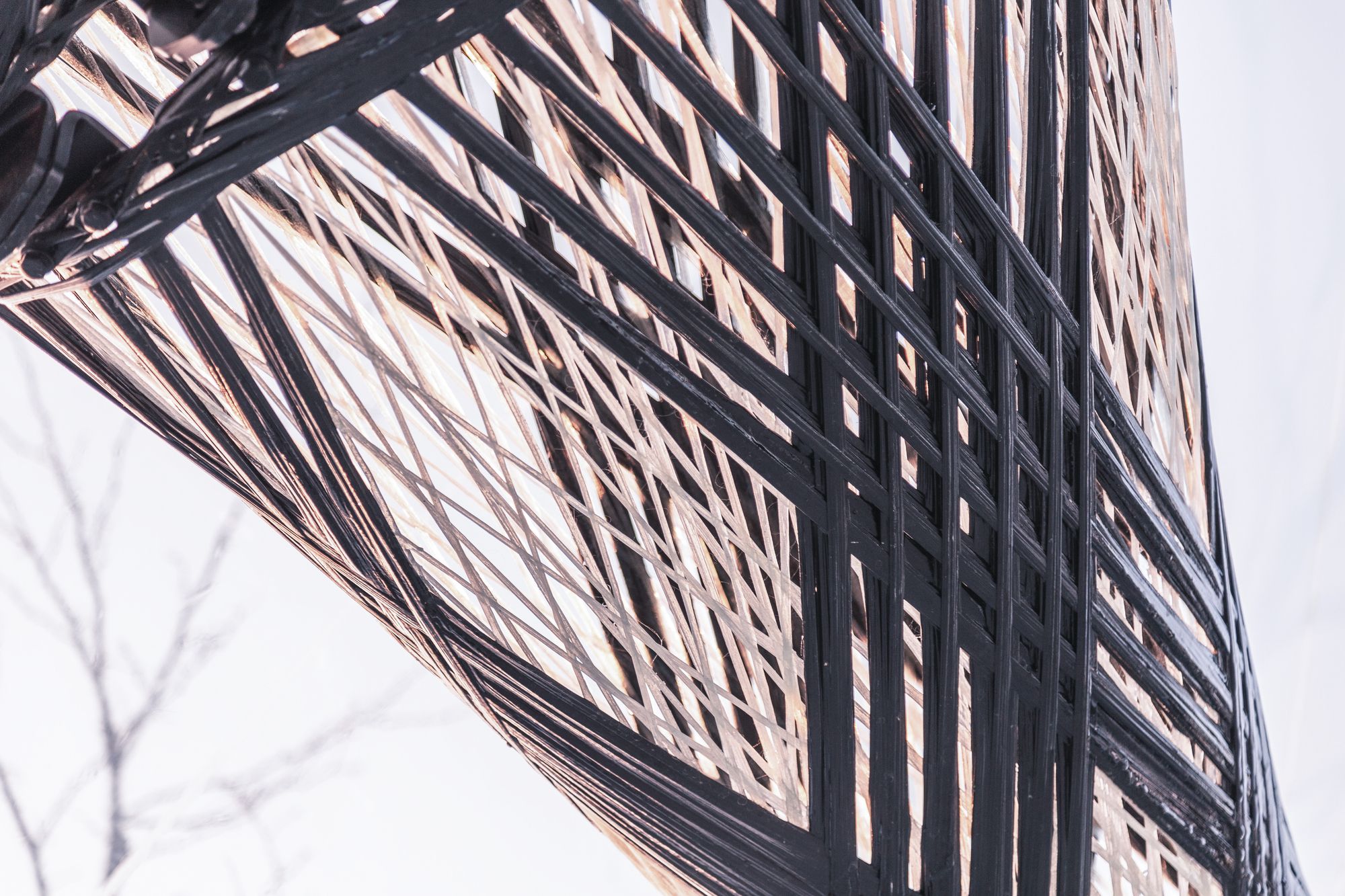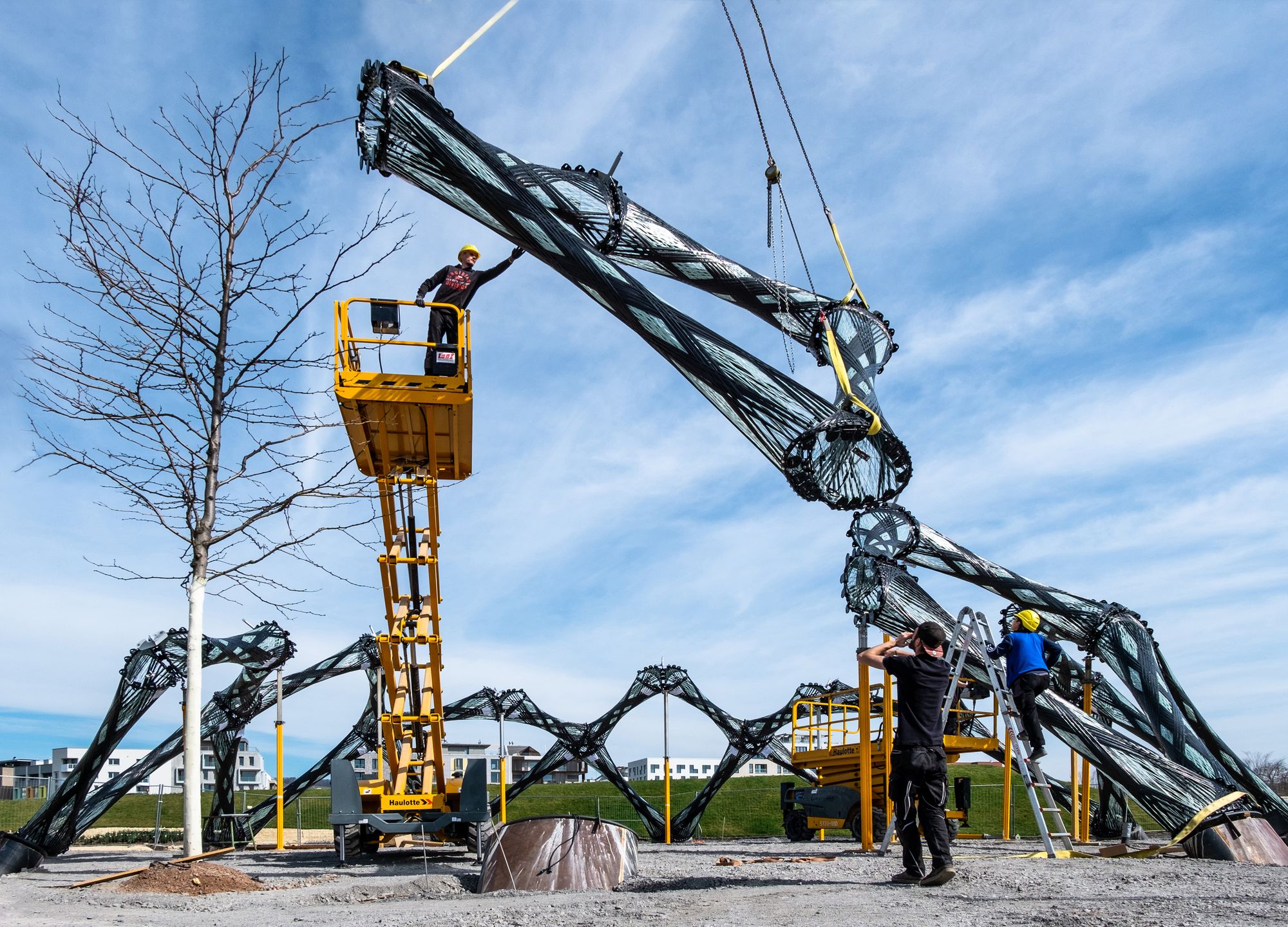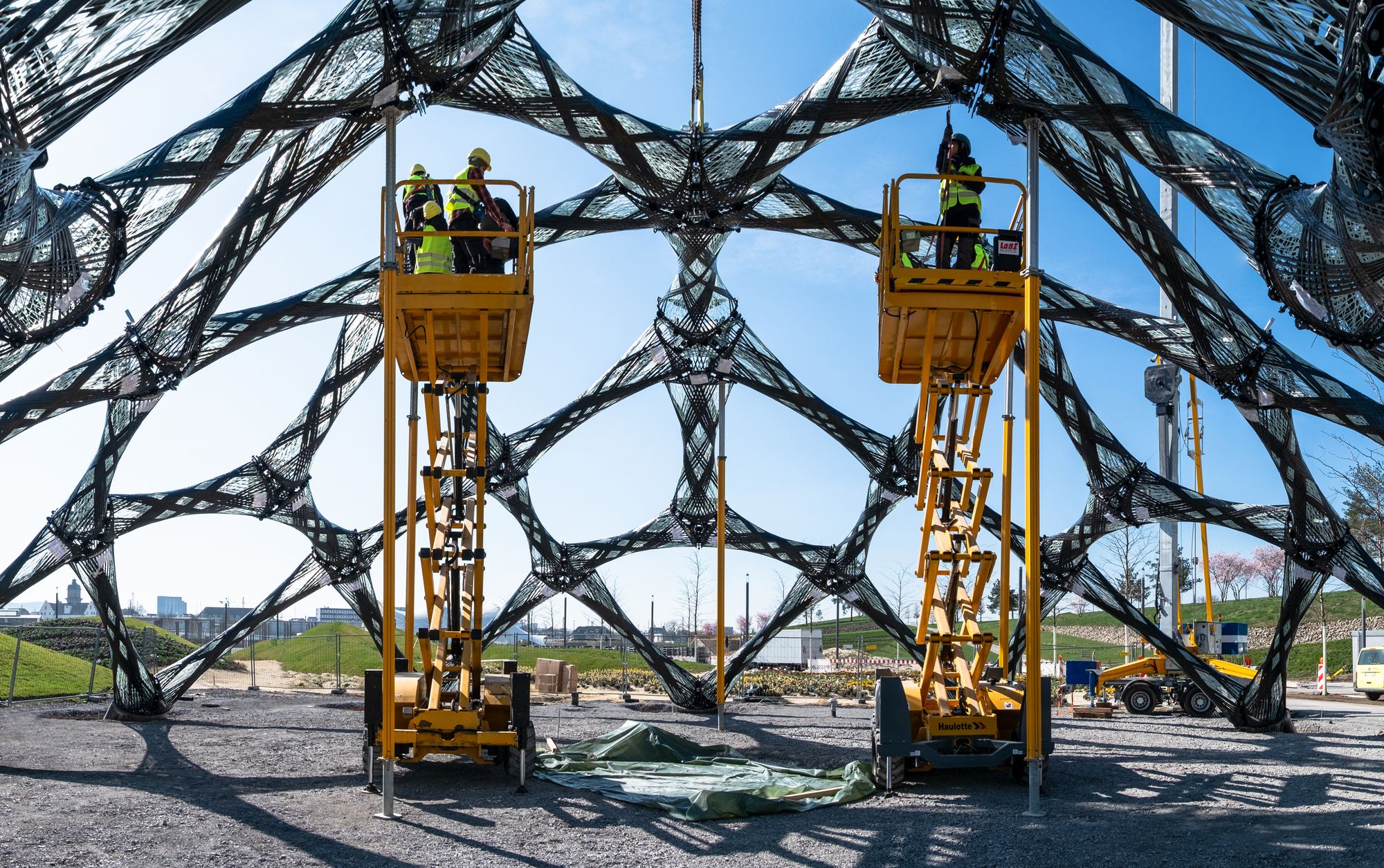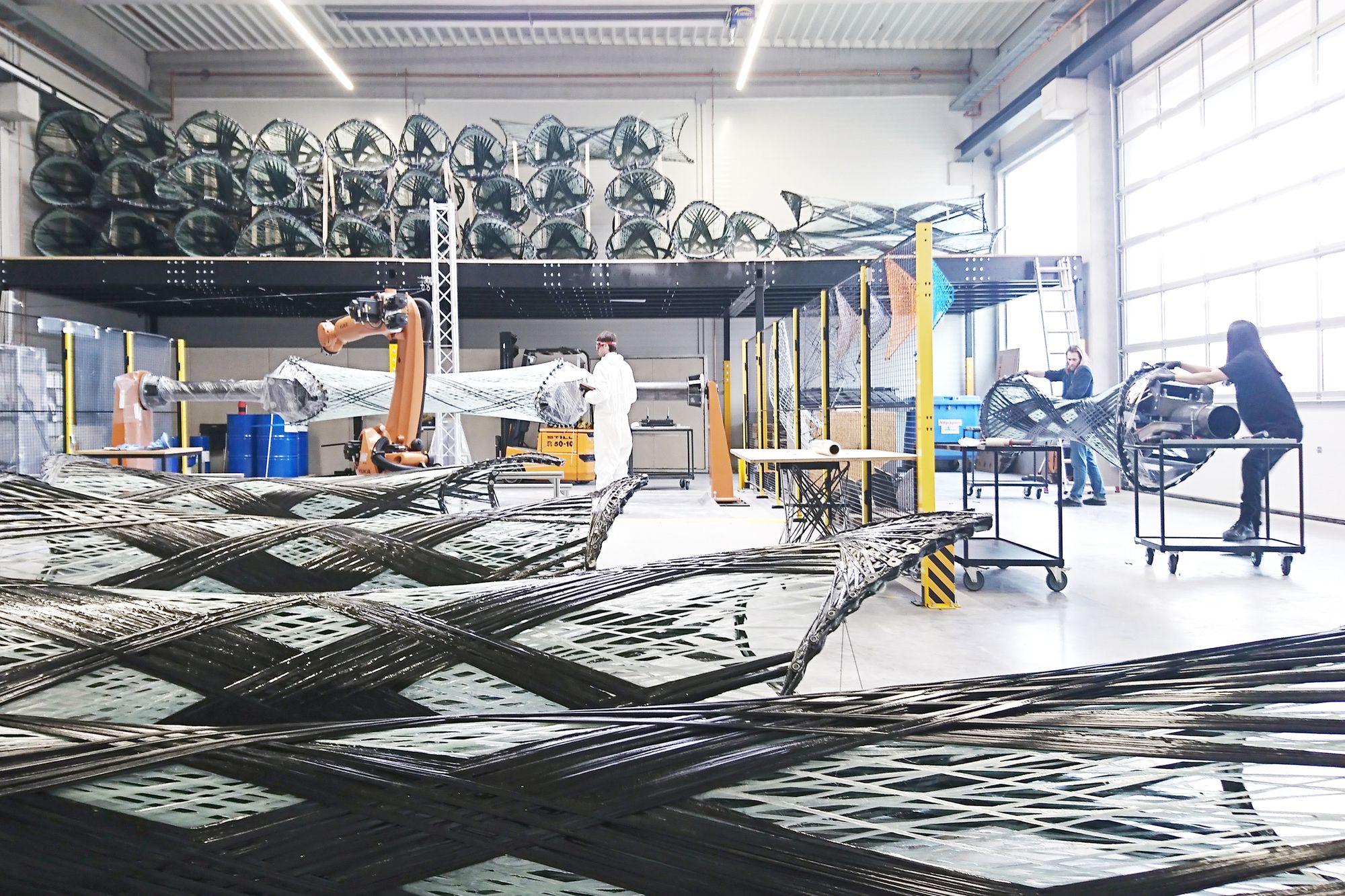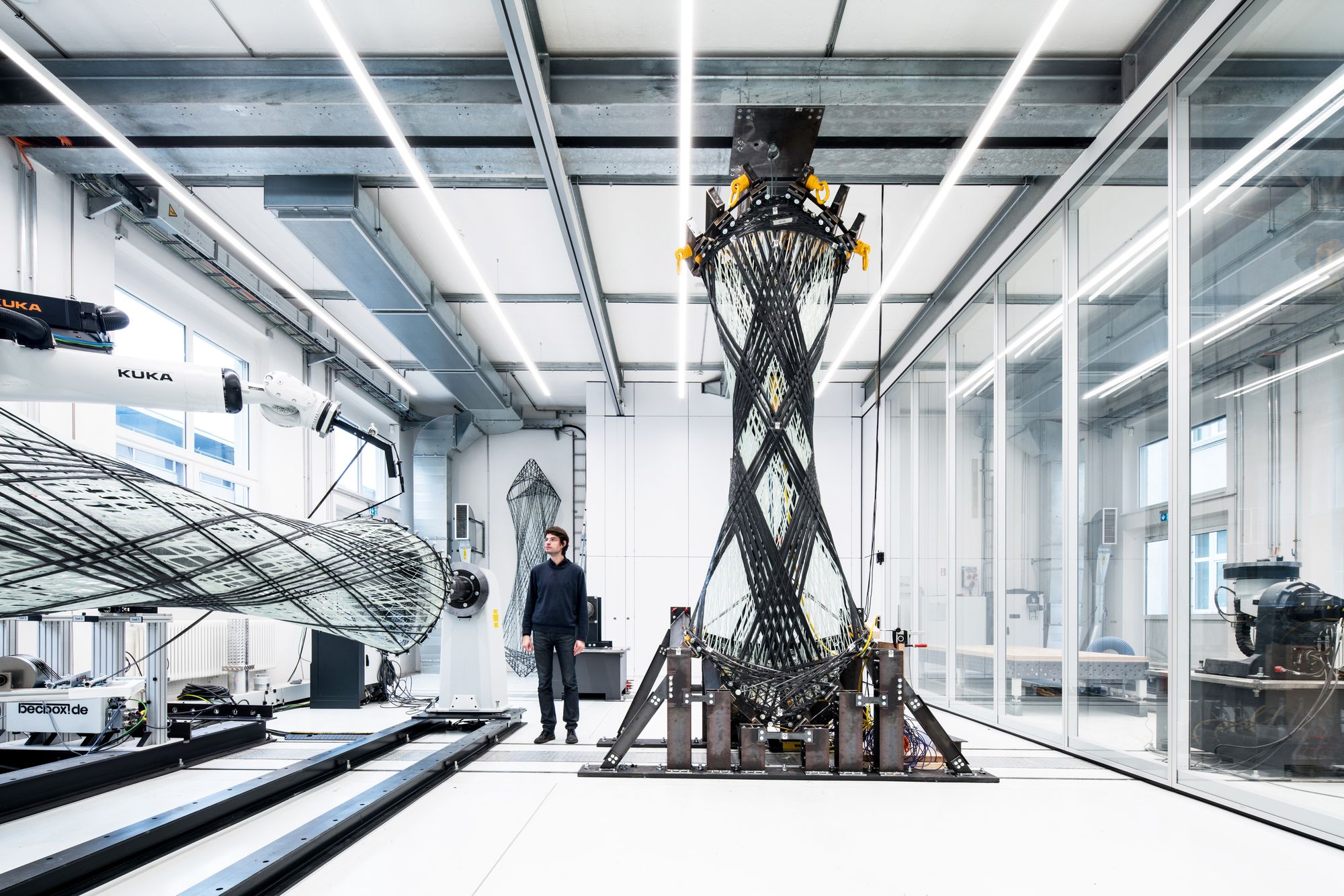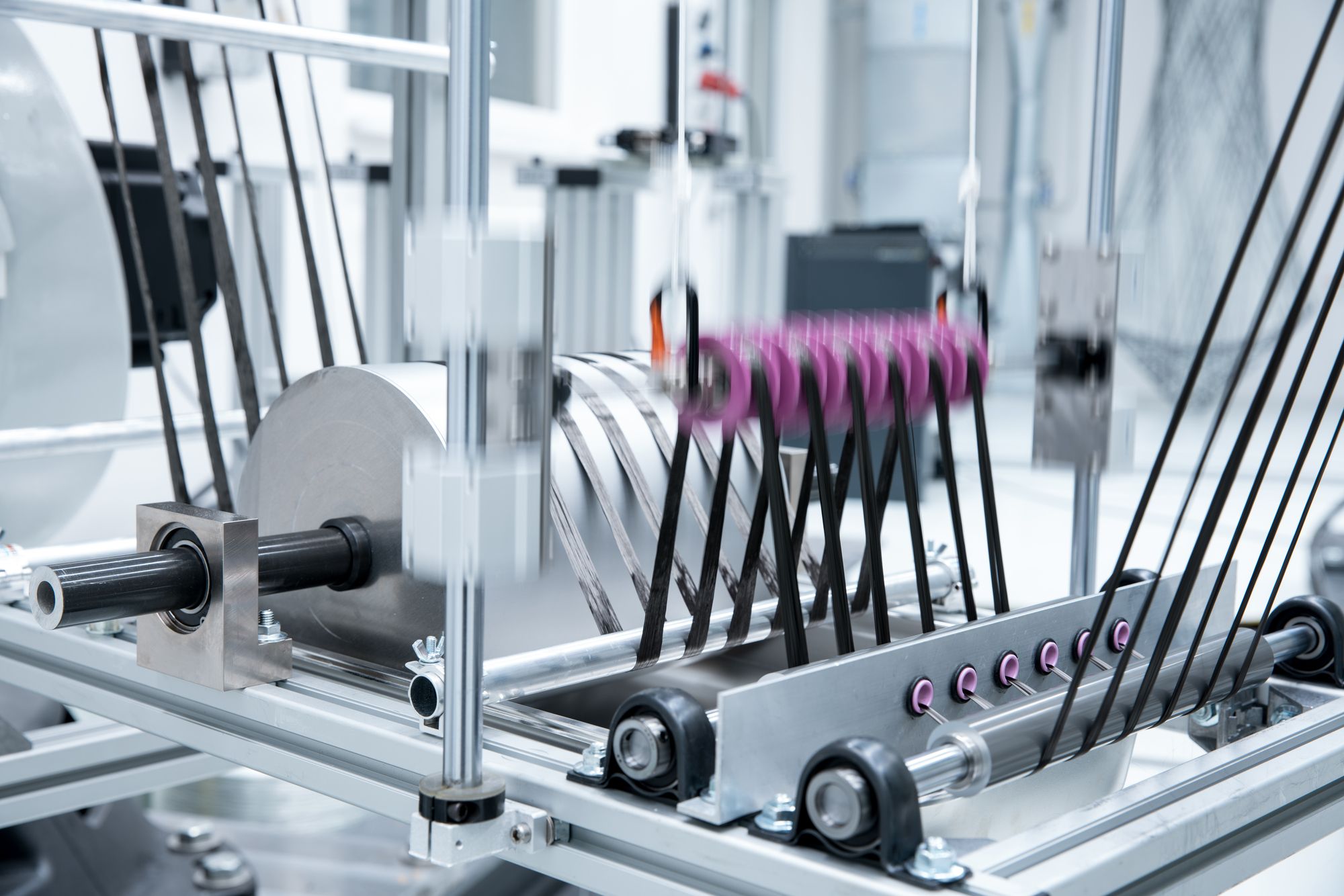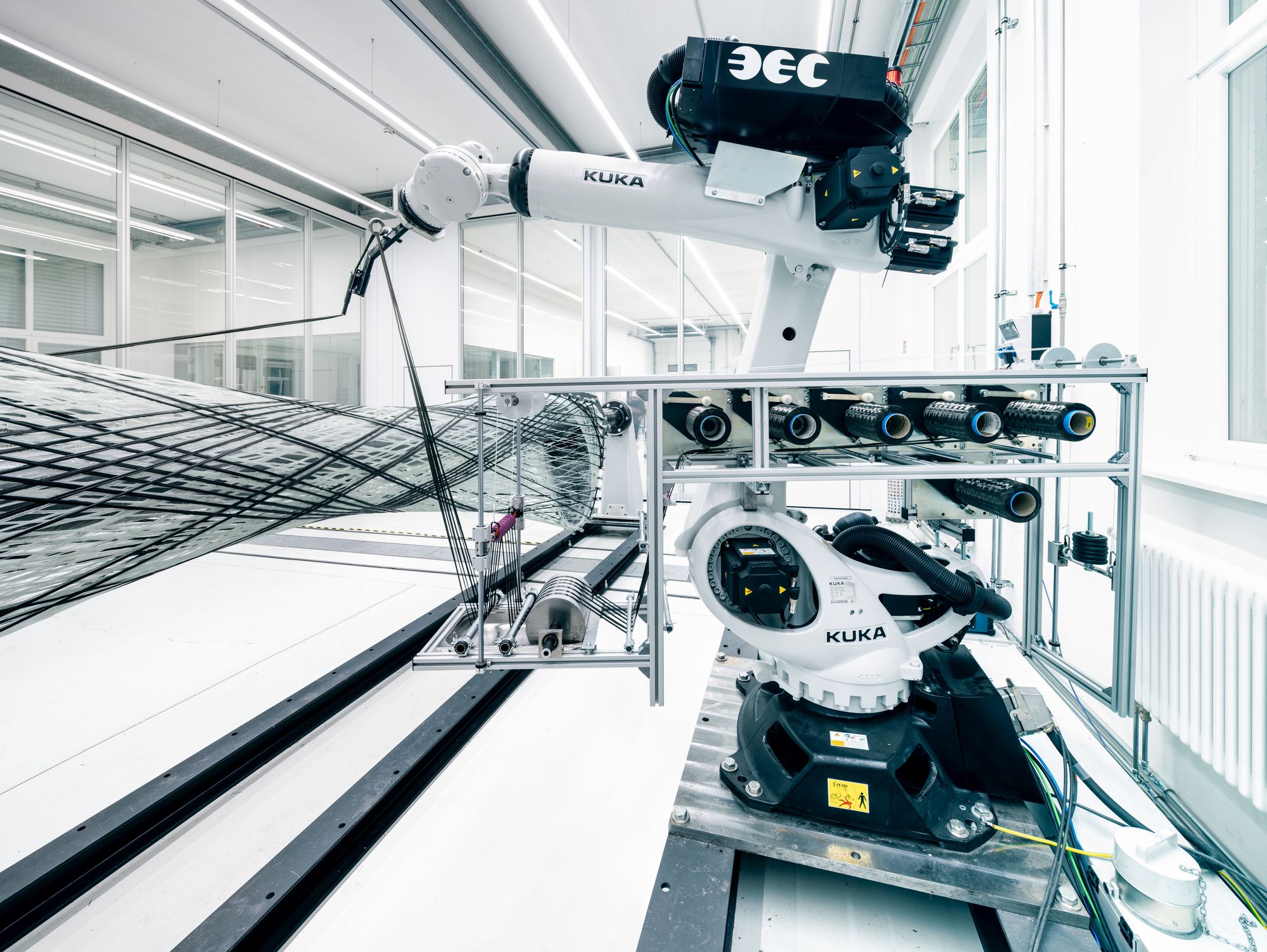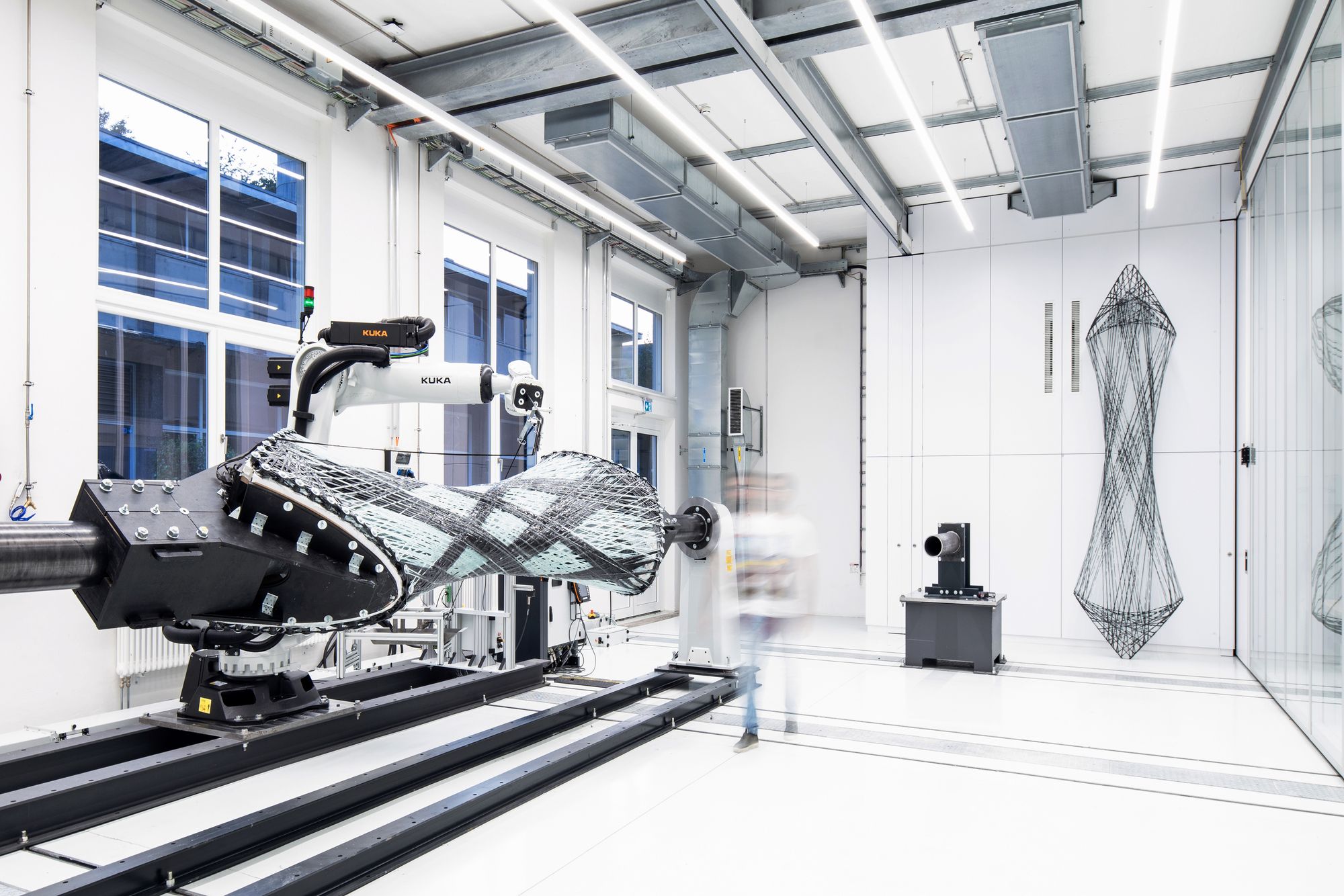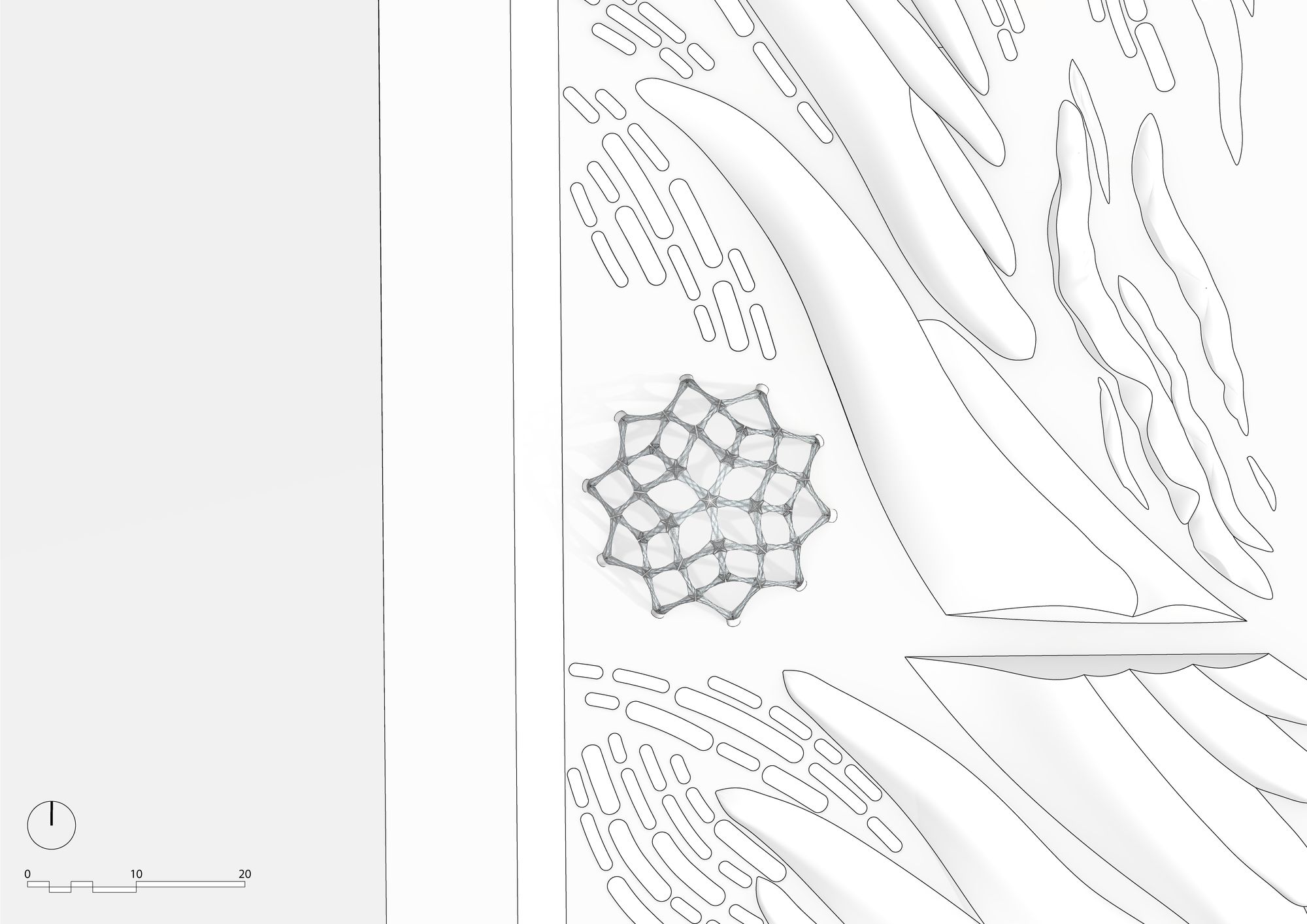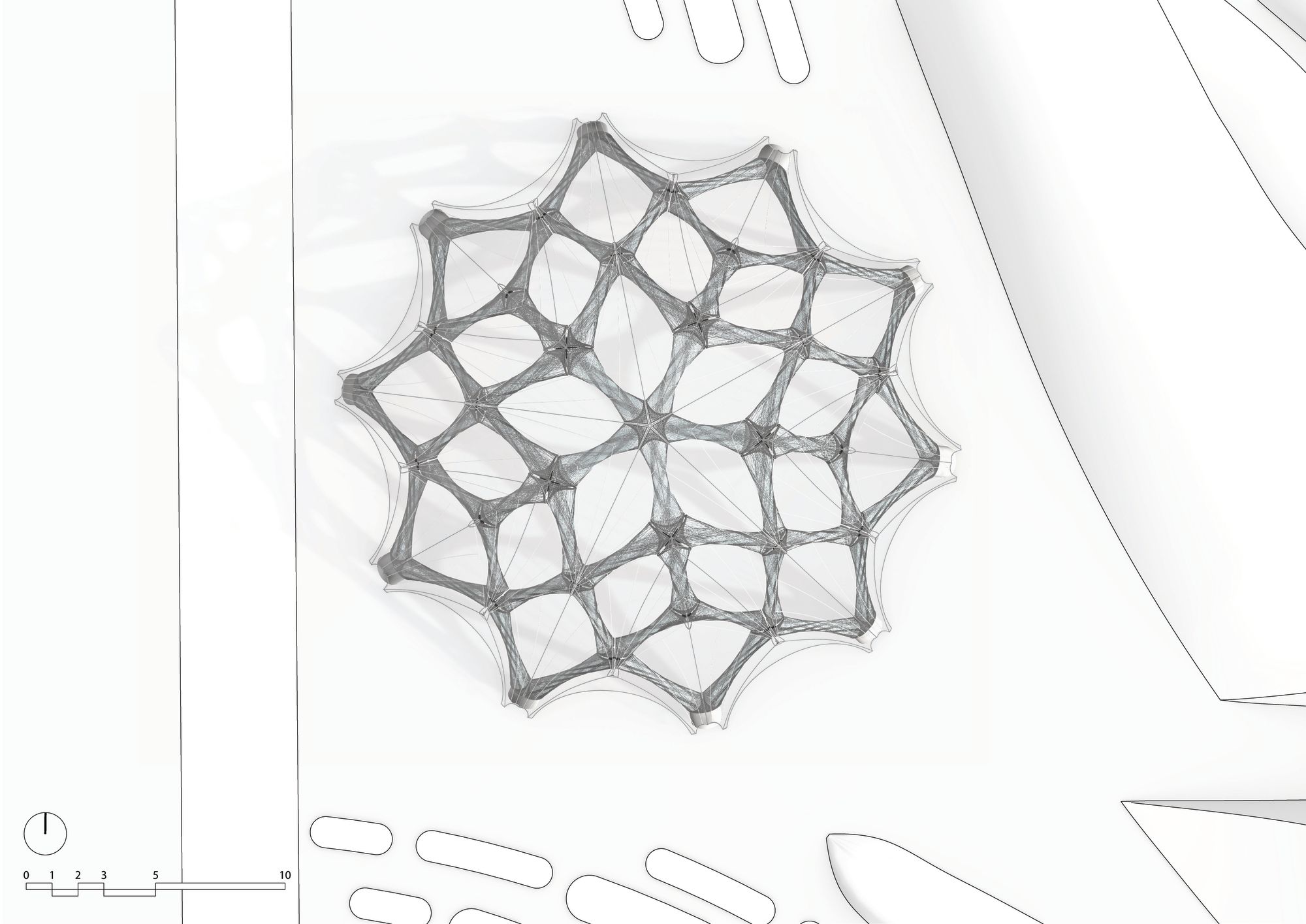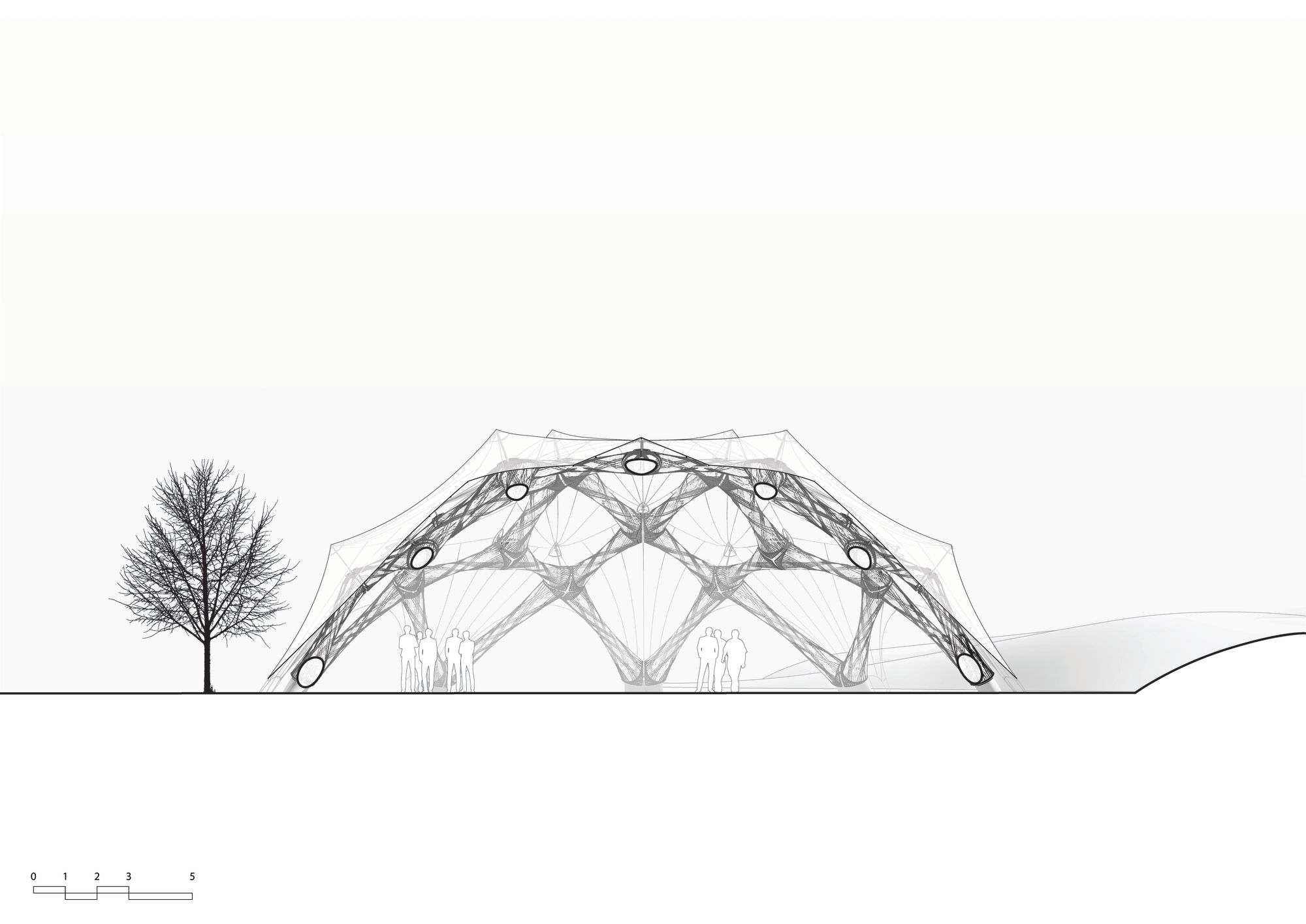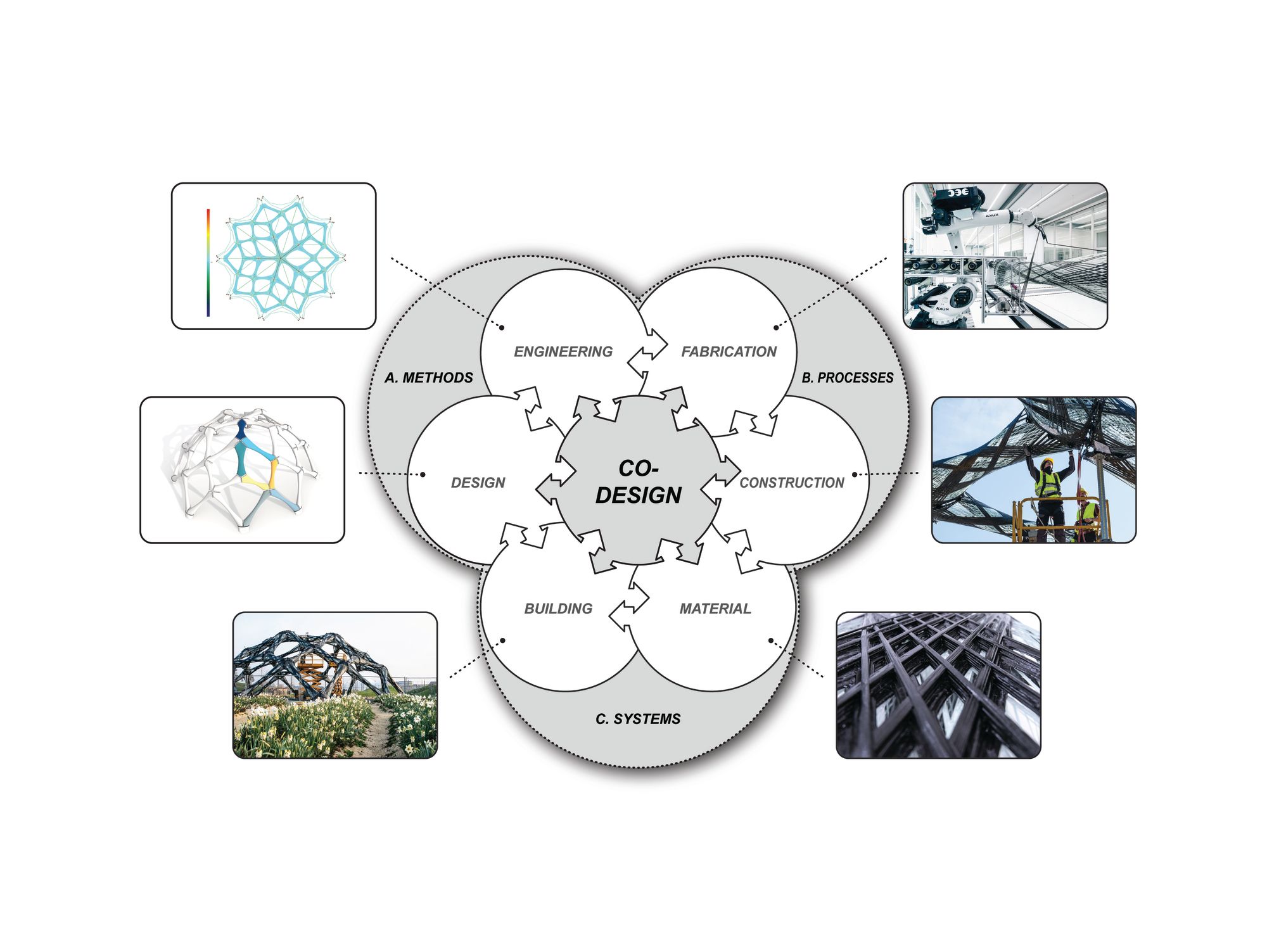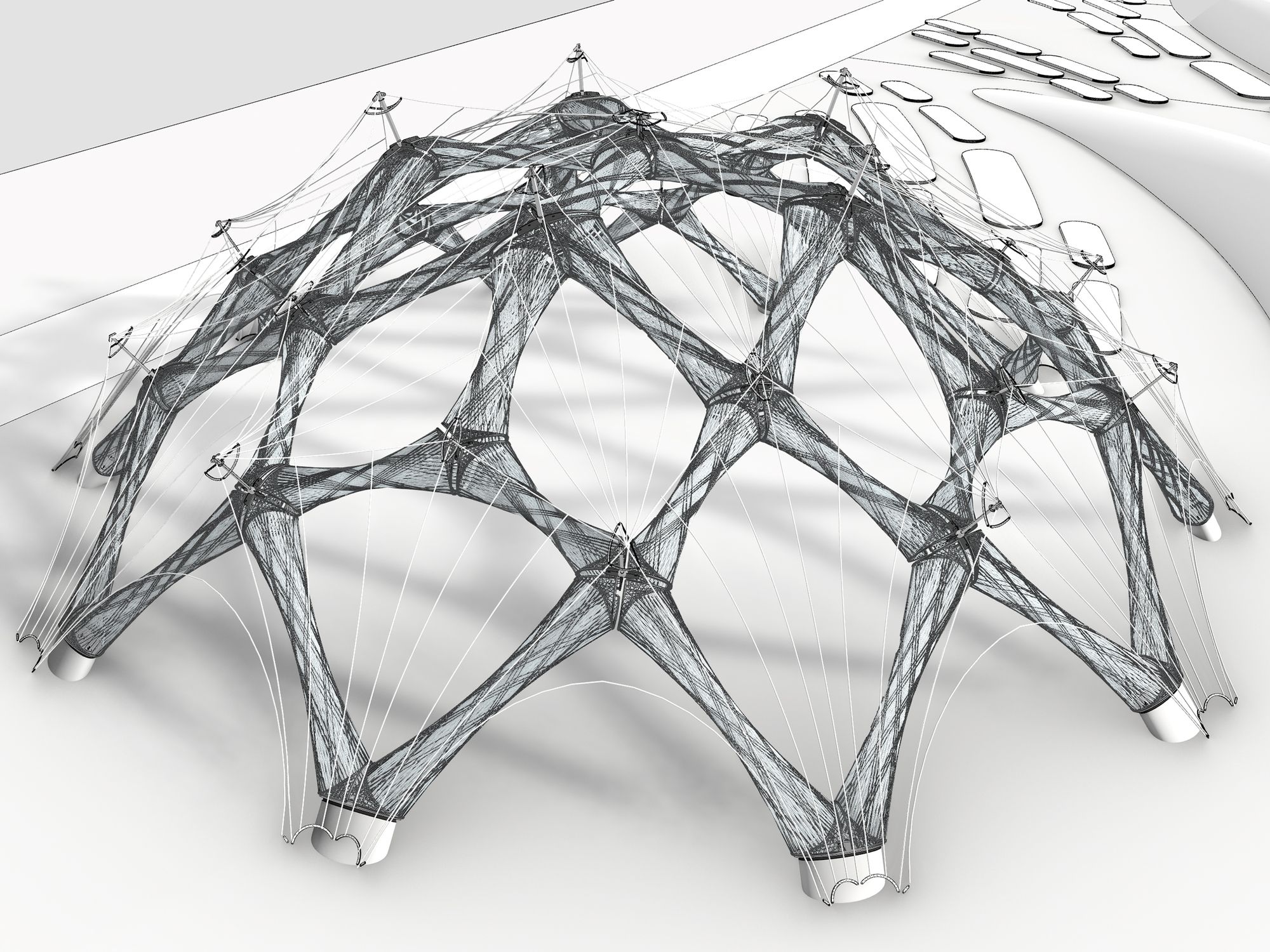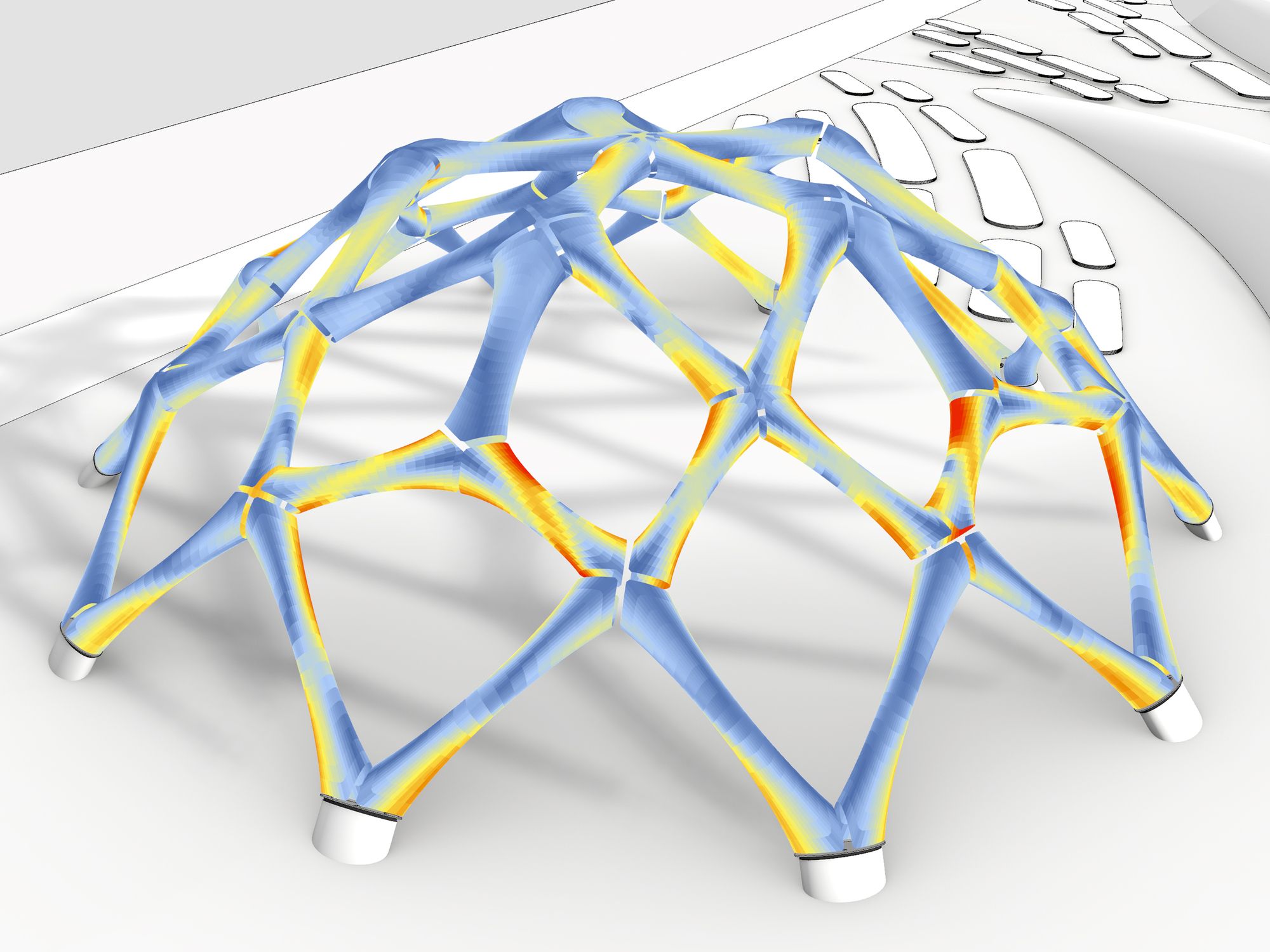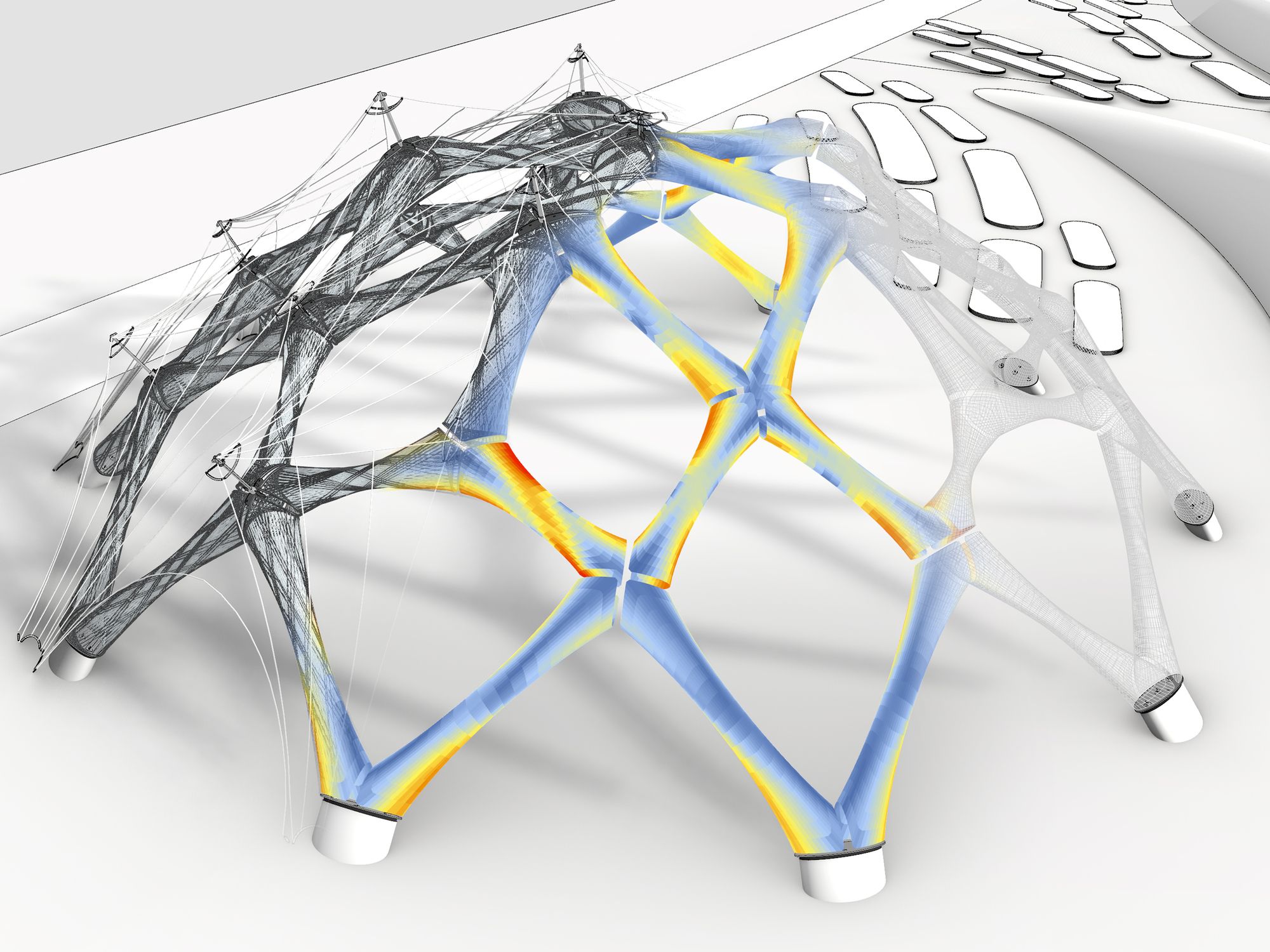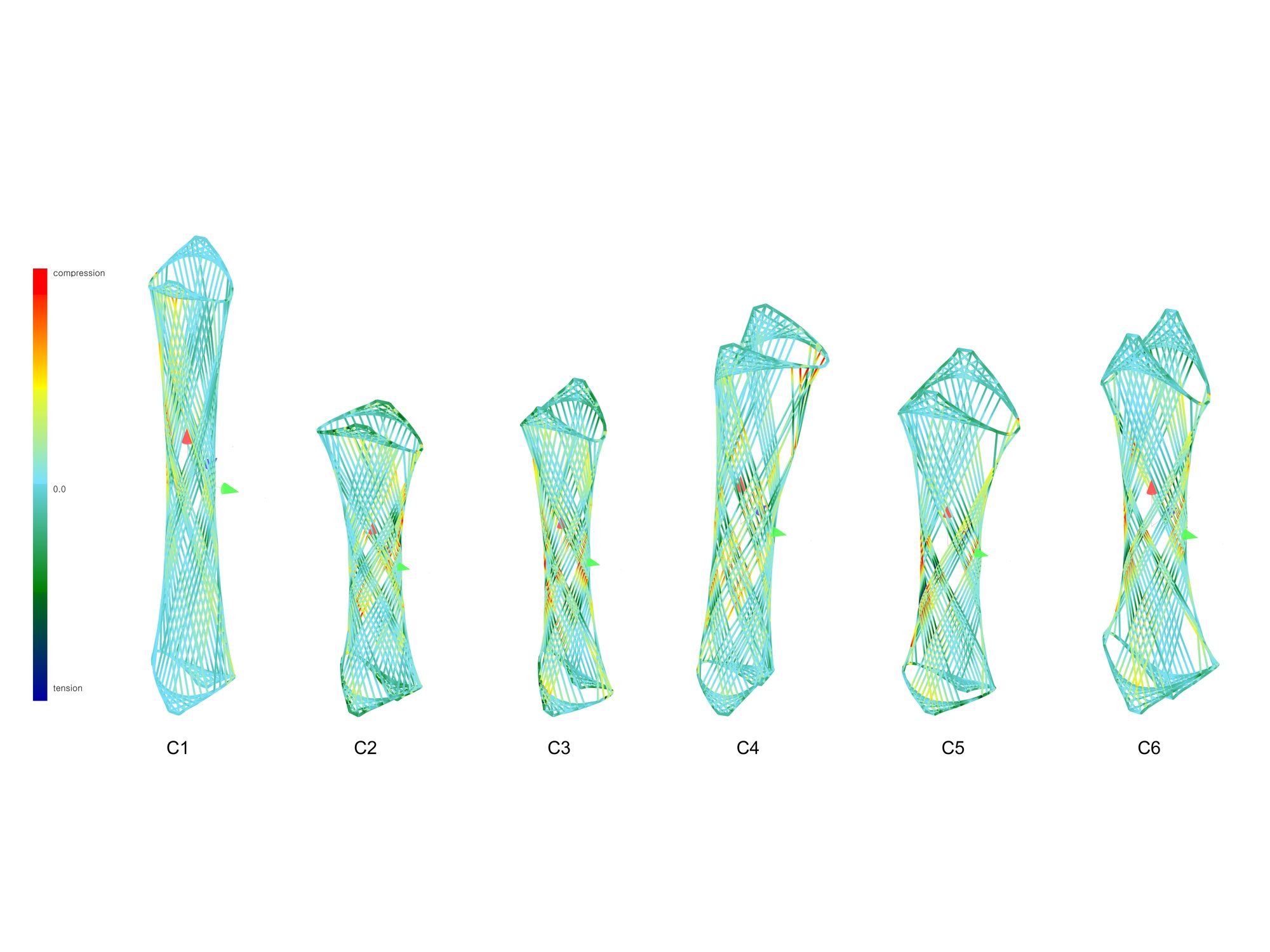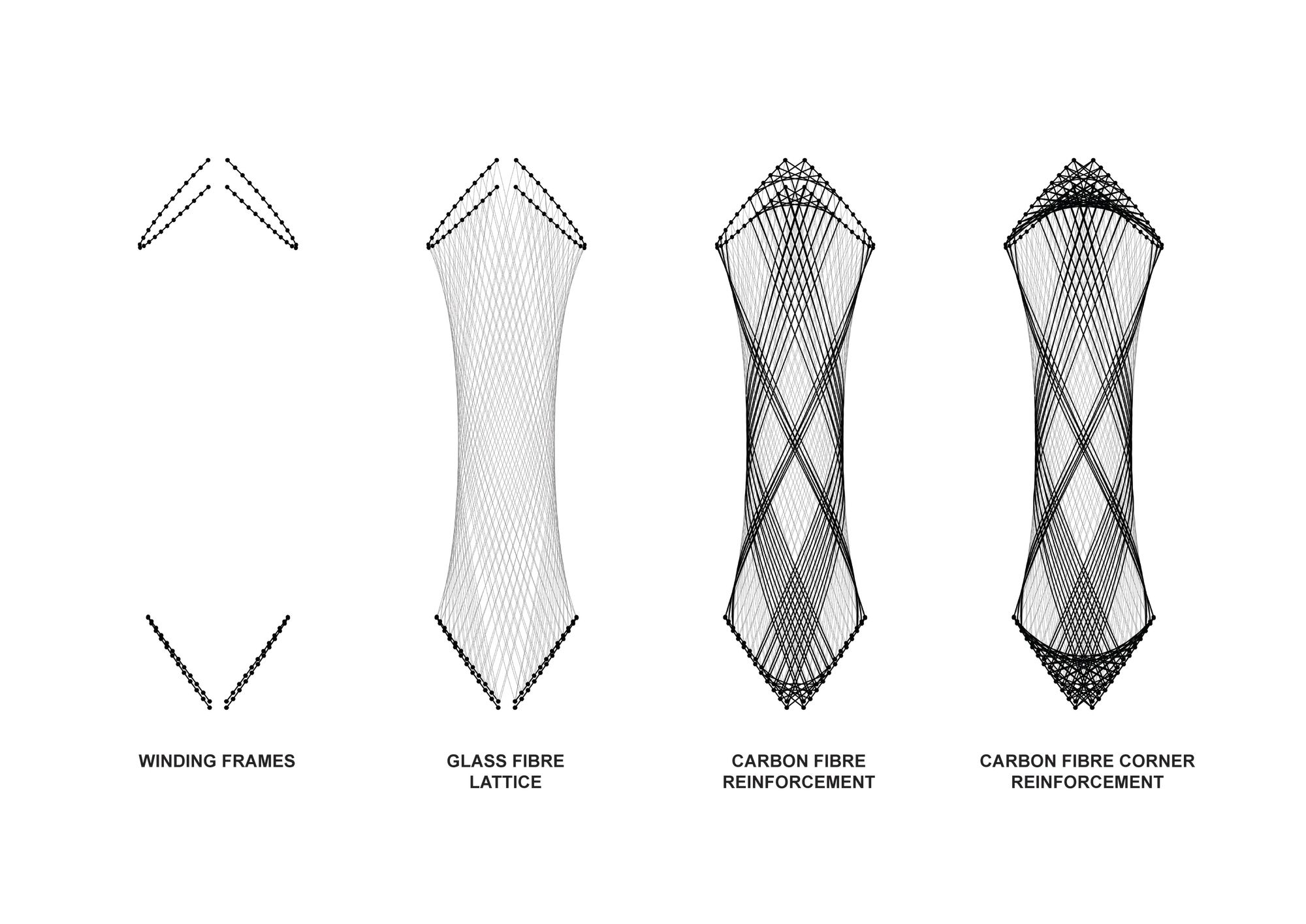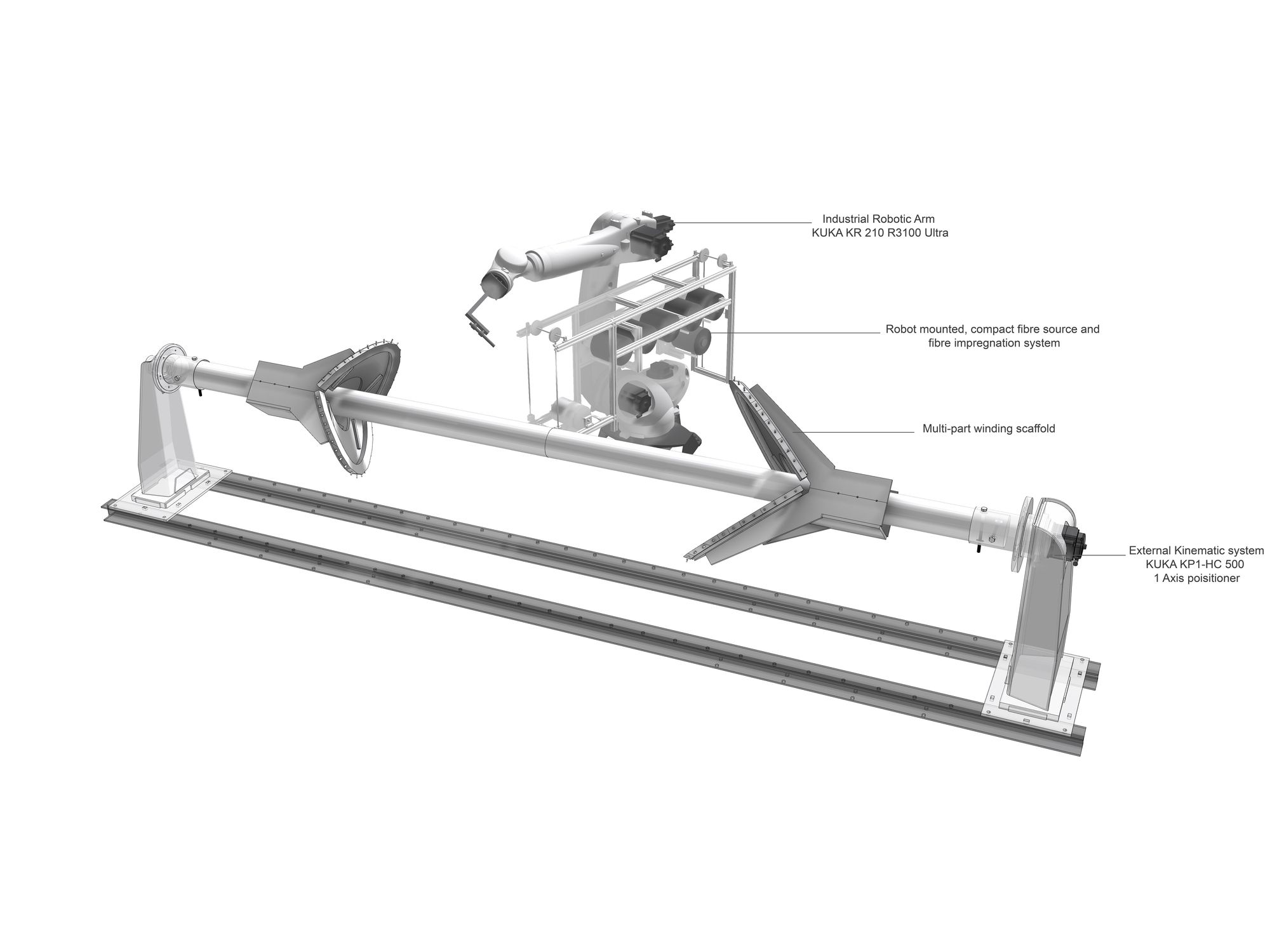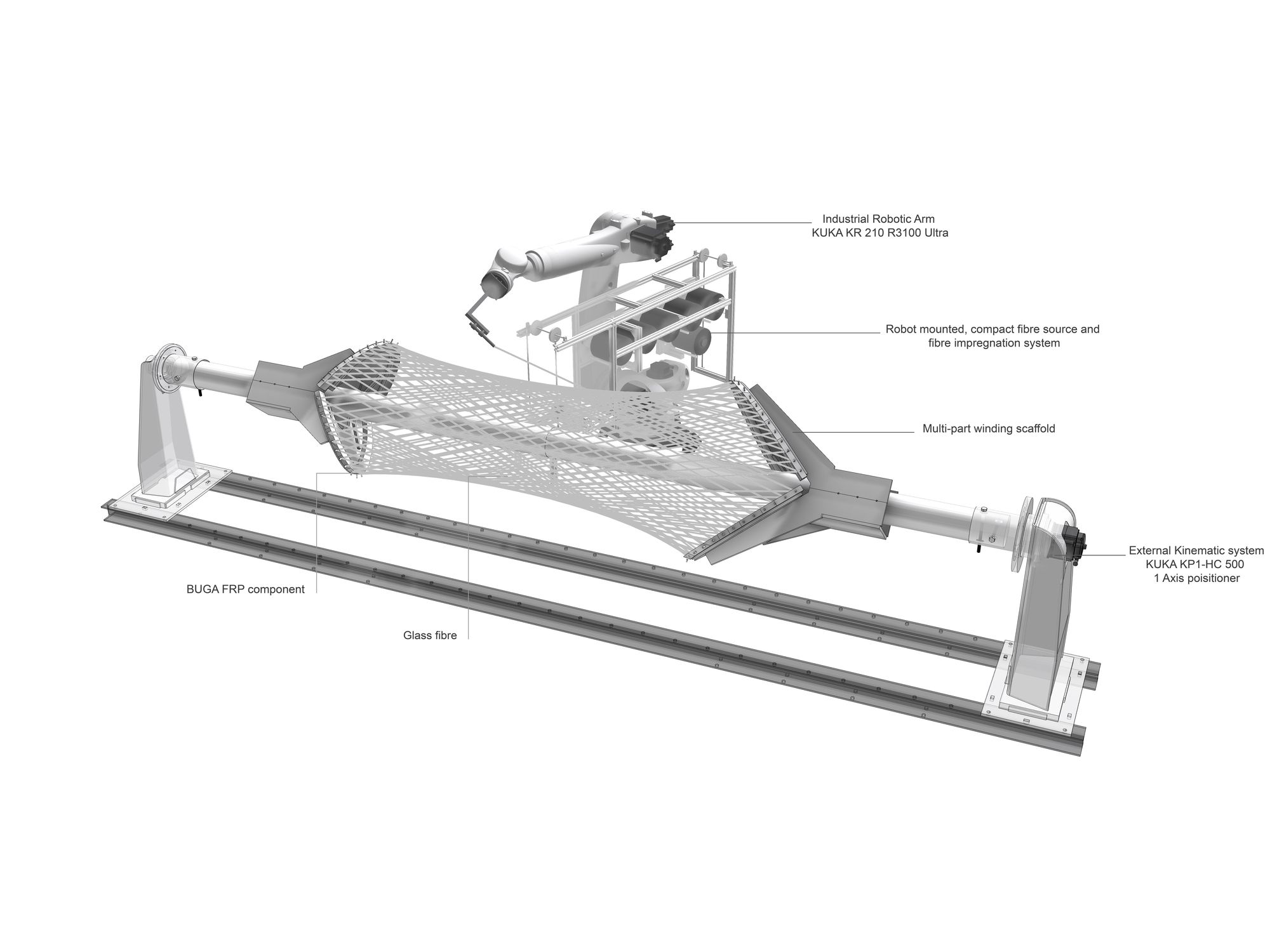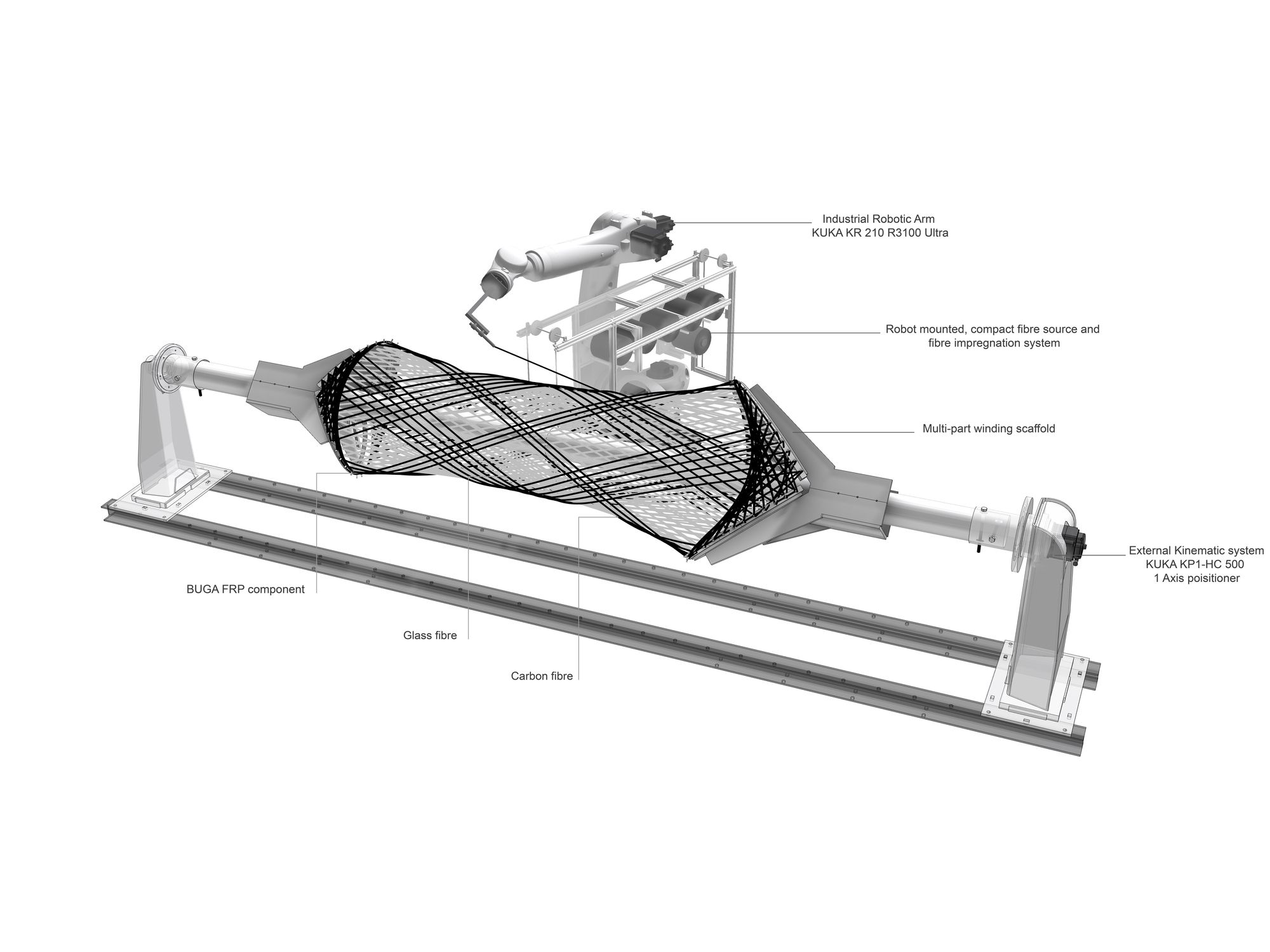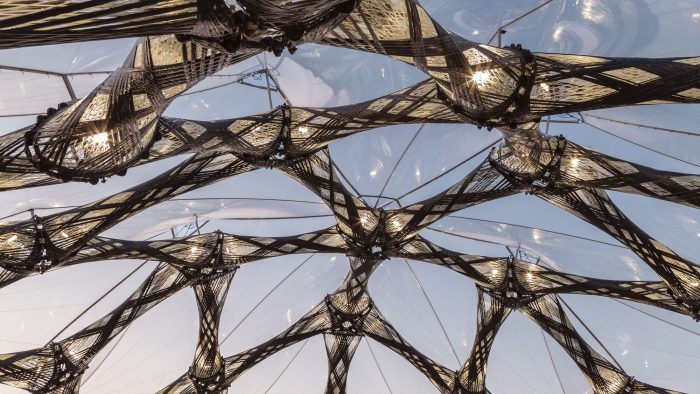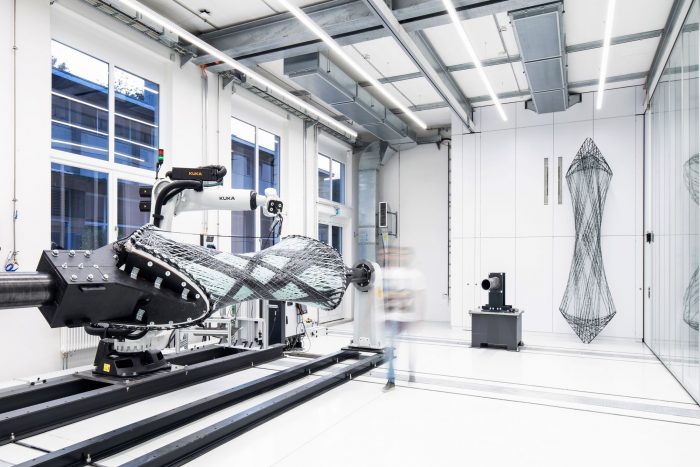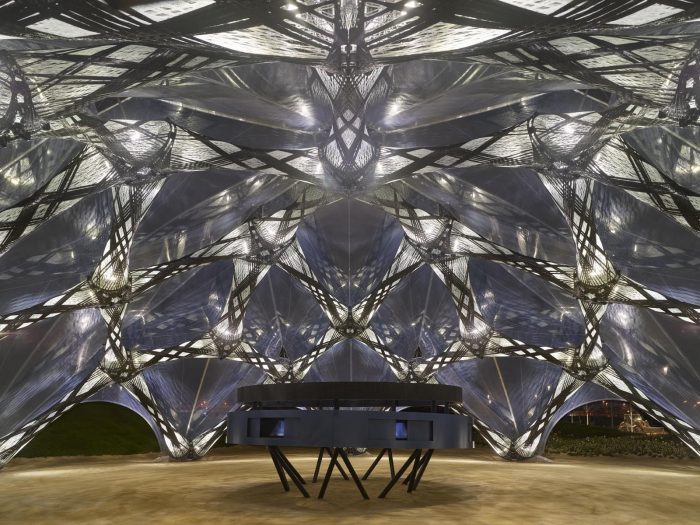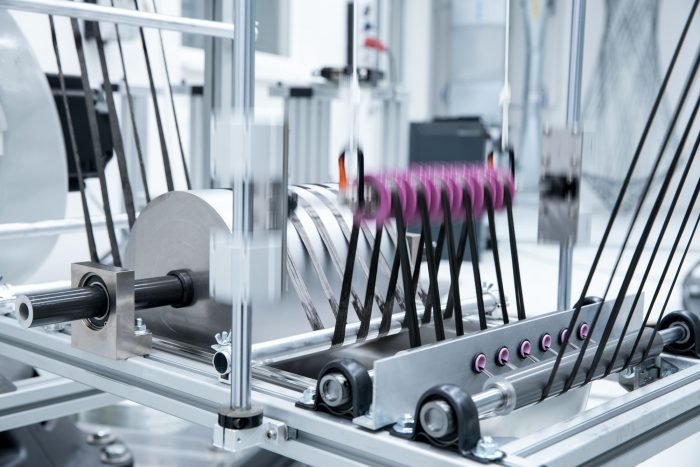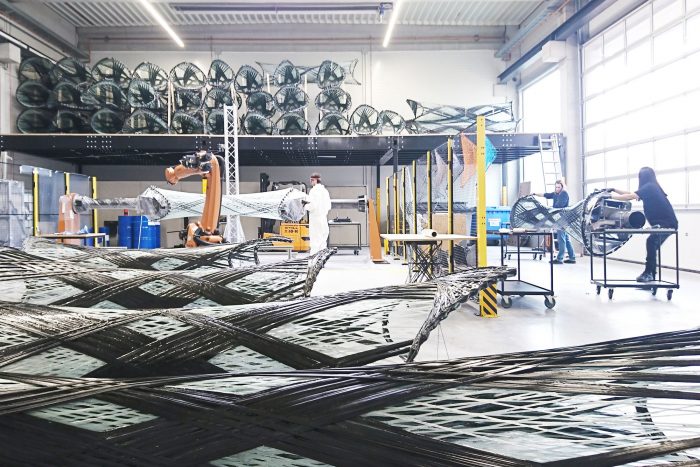Embedded in the wavelike landscape of the Bundesgartenschau grounds, the BUGA Fibre Pavilion offers visitors an astounding architectural experience and a glimpse of future construction. It builds on many years of biomimetic research in architecture at the Institute for Computational Design and Construction (ICD) and the Institute for Building Structures and Structural Design (ITKE) at the University of Stuttgart.
The pavilion demonstrates how combining cutting-edge computational technologies with constructional principles found in nature enables the development of truly novel and genuinely digital building system. The pavilion’s load-bearing structure is robotically produced from advanced fiber composites only.
This globally unique structure is not only highly effective and exceptionally lightweight, but it also provides a distinctive yet authentic architectural expression and an extraordinary spatial experience. The BUGA Fibre Pavilion aims to transfer the biological principle of load-adapted and thus highly differentiated fiber composite systems into architecture. Manmade composites, such as the glass- or carbon-fiber-reinforced plastics that were used for this building, are ideally suited for such an approach because they share their fundamental characteristics with natural composites.
The pavilion is made from more than 150.000 meters of spatially arranged glass- and carbon fibers. They all need to be individually designed and placed, which is very hard to achieve with a typical linear workflow and established production technologies.
Thus, it requires a novel co-design approach, where architectural design, structural engineering, and robotic fabrication are developed in continuous computational feedback. In this way, the fiber arrangement, density and orientation of each building component can be individually calibrated, structurally tuned and architecturally articulated, while remaining directly producible.
The pavilion covers a floor area of around 400 square meters and achieves a free span of more than 23 meters. It is enclosed by a fully transparent, mechanically pre-stressed ETFE membrane. The primary load bearing structure is made from 60 bespoke fiber composite components only. With 7.6 kilograms per square meter, it is exceptionally lightweight, approximately five times lighter than a more conventional steel structure.
Elaborate testing procedures required for full approval showed that a single fibrous component can take up to 250-kilonewton of compression force, which equals around 25 tons or the weight of more than 15 cars. The pavilion shows how a truly integrative approach to computational design and robotic fabrication enables the development of novel, truly digital fiber composite building systems that are fully compliant with the stringent German building regulations, exceptionally light, structurally efficient and architecturally expressive.
Project Info:
Architects: ICD/ITKE University of Stuttgart
Location: Bundesgartenschau Heilbronn GmbH 2019, Theodor-Fischer-Straße 36, 74076 Heilbronn, Germany
Area: 400.0 m2
Project Year: 2019
Photographs: Roland Halbe
Project Name: BUGA Fibre Pavilion
